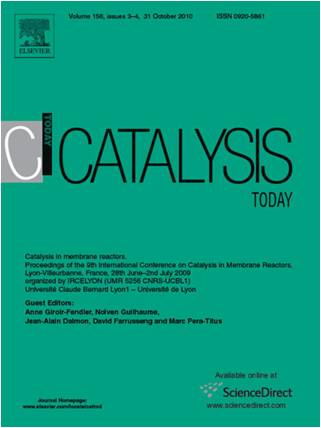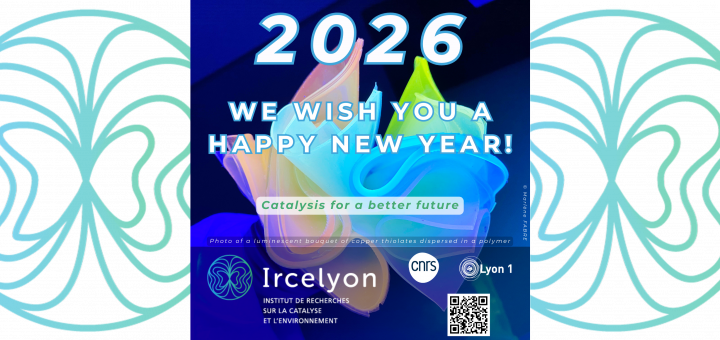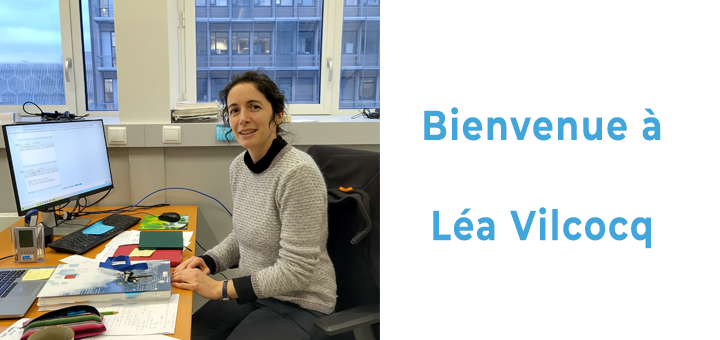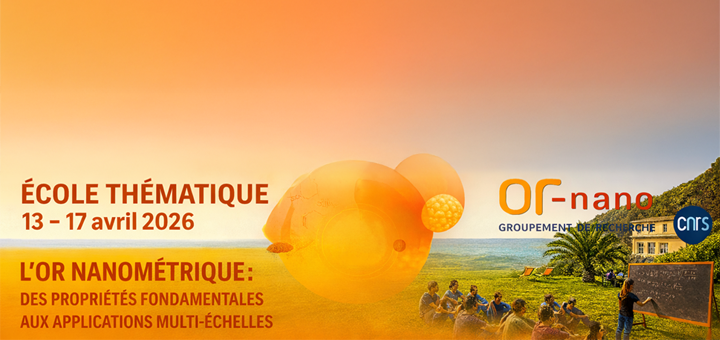Altamirano A.,  Cecile Daniel Personnel technique et administratif 445 365 (Standard + 33 [0] 472 445 300) P109 Daniel C.,
Cecile Daniel Personnel technique et administratif 445 365 (Standard + 33 [0] 472 445 300) P109 Daniel C.,  David Farrusseng Chercheur 445 365 (Standard + 33 [0] 472 445 300) P109 Farrusseng D.,
David Farrusseng Chercheur 445 365 (Standard + 33 [0] 472 445 300) P109 Farrusseng D.,  Frederic Meunier Chercheur 445 468 (Standard + 33 [0] 472 445 300) C13.009 Meunier F., Talu O.
Frederic Meunier Chercheur 445 468 (Standard + 33 [0] 472 445 300) C13.009 Meunier F., Talu O.
Dual-Site (Langmuir-Association Theory) model for Al-Fumarate/Water isotherms
ADSORPTION-JOURNAL OF THE INTERNATIONAL ADSORPTION SOCIETY, 2025, 31(7), p.
Dedecker K., Paret B., Presmanes L., Duployer B., Barnabe A., Menini P.,  David Farrusseng Chercheur 445 365 (Standard + 33 [0] 472 445 300) P109 Farrusseng D., Bechelany M., Drobek M., Julbe A.
David Farrusseng Chercheur 445 365 (Standard + 33 [0] 472 445 300) P109 Farrusseng D., Bechelany M., Drobek M., Julbe A.
Optimizing ZIF-8 membrane growth on top of semiconductive Ga-doped ZnO sensitive layers
RSC APPLIED INTERFACES, 2025, 2(5), pp. 1345-1358
 Miriam Perbet Personnel étudiant ou non permanent 445 300 (Standard + 33 [0] 472 445 300) P-125 Perbet M., Michon T.,
Miriam Perbet Personnel étudiant ou non permanent 445 300 (Standard + 33 [0] 472 445 300) P-125 Perbet M., Michon T.,  Elsje Alessandra Quadrelli Chercheur 445 359 (Standard + 33 [0] 472 445 300) P114 Quadrelli E. A.,
Elsje Alessandra Quadrelli Chercheur 445 359 (Standard + 33 [0] 472 445 300) P114 Quadrelli E. A.,  Mickaele Bonneau Personnel étudiant ou non permanent 445 300 (Standard + 33 [0] 472 445 300) P-214 Bonneau M.,
Mickaele Bonneau Personnel étudiant ou non permanent 445 300 (Standard + 33 [0] 472 445 300) P-214 Bonneau M.,  David Farrusseng Chercheur 445 365 (Standard + 33 [0] 472 445 300) P109 Farrusseng D.
David Farrusseng Chercheur 445 365 (Standard + 33 [0] 472 445 300) P109 Farrusseng D.
Scalable one-step syntheses of aluminium-based MOFs
CHEMICAL COMMUNICATIONS, 2025, 61(67), pp. 12562-12565
 Valentin L'Hospital Personnel étudiant ou non permanent 445 486 (Standard + 33 [0] 472 445 300) P-127 L'Hospital V., De Araujo L.,
Valentin L'Hospital Personnel étudiant ou non permanent 445 486 (Standard + 33 [0] 472 445 300) P-127 L'Hospital V., De Araujo L.,  Emmanuel Landrivon Personnel technique et administratif 445 384 (Standard + 33 [0] 472 445 300) P112 Landrivon E., Mello A., Radoiu M., Trillaud V., Meunier J.,
Emmanuel Landrivon Personnel technique et administratif 445 384 (Standard + 33 [0] 472 445 300) P112 Landrivon E., Mello A., Radoiu M., Trillaud V., Meunier J.,  Yves Schuurman Chercheur 445 482 (Standard + 33 [0] 472 445 300) P129 Schuurman Y.,
Yves Schuurman Chercheur 445 482 (Standard + 33 [0] 472 445 300) P129 Schuurman Y.,  Nolven Guilhaume Chercheur 445 389 (Standard + 33 [0] 472 445 300) P107 Guilhaume N.,
Nolven Guilhaume Chercheur 445 389 (Standard + 33 [0] 472 445 300) P107 Guilhaume N.,  David Farrusseng Chercheur 445 365 (Standard + 33 [0] 472 445 300) P109 Farrusseng D.
David Farrusseng Chercheur 445 365 (Standard + 33 [0] 472 445 300) P109 Farrusseng D.
Methane pyrolysis into hydrogen and solid carbon: A comparative analysis of conventional and microwave heating approaches
CATALYSIS TODAY, 2025, 459, p.
Manokaran R.,  Thibaud Aumond Personnel étudiant ou non permanent 445 300 (Standard + 33 [0] 472 445 300) P-208 Aumond T., Eck J., Ergincan O.,
Thibaud Aumond Personnel étudiant ou non permanent 445 300 (Standard + 33 [0] 472 445 300) P-208 Aumond T., Eck J., Ergincan O.,  Cecile Daniel Personnel technique et administratif 445 365 (Standard + 33 [0] 472 445 300) P109 Daniel C.,
Cecile Daniel Personnel technique et administratif 445 365 (Standard + 33 [0] 472 445 300) P109 Daniel C.,  David Farrusseng Chercheur 445 365 (Standard + 33 [0] 472 445 300) P109 Farrusseng D., Coasne B.
David Farrusseng Chercheur 445 365 (Standard + 33 [0] 472 445 300) P109 Farrusseng D., Coasne B.
Molecular simulation of fluid adsorption in nanoporous adsorbents: simple descriptors for space decontamination applications
ADSORPTION-JOURNAL OF THE INTERNATIONAL ADSORPTION SOCIETY, 2025, 31(5), p.
De Araujo L.,  David Farrusseng Chercheur 445 365 (Standard + 33 [0] 472 445 300) P109 Farrusseng D.
David Farrusseng Chercheur 445 365 (Standard + 33 [0] 472 445 300) P109 Farrusseng D.
Artificial intelligence-driven advances in photocatalytic hydrogen production
NEW JOURNAL OF CHEMISTRY, 2025, p.
Ho L., Lesage A., Rossini A.,  David Farrusseng Chercheur 445 365 (Standard + 33 [0] 472 445 300) P109 Farrusseng D., Coasne B.
David Farrusseng Chercheur 445 365 (Standard + 33 [0] 472 445 300) P109 Farrusseng D., Coasne B.
Dynamics Slowdown Induced by Gas Oversolubility in Nanoconfined Fluids
ACS NANO, 2025, 19(13), pp. 12971-12981
Chizallet C., Camp C.,  David Farrusseng Chercheur 445 365 (Standard + 33 [0] 472 445 300) P109 Farrusseng D.,
David Farrusseng Chercheur 445 365 (Standard + 33 [0] 472 445 300) P109 Farrusseng D.,  Pascal Fongarland Guest 445 300 (Standard + 33 [0] 472 445 300) P Fongarland P.,
Pascal Fongarland Guest 445 300 (Standard + 33 [0] 472 445 300) P Fongarland P.,  Dorothee Laurenti Chercheur 445 327 (Standard + 33 [0] 472 445 300) P310 Laurenti D., Lofberg A., Mauge F., Olivier-Bourbigou H.,
Dorothee Laurenti Chercheur 445 327 (Standard + 33 [0] 472 445 300) P310 Laurenti D., Lofberg A., Mauge F., Olivier-Bourbigou H.,  Catherine Pinel Chercheur 445 478 (Standard + 33 [0] 472 445 300) P201 Pinel C., Tanchoux N.
Catherine Pinel Chercheur 445 478 (Standard + 33 [0] 472 445 300) P201 Pinel C., Tanchoux N.
Roots and Wings for a Better World at the 18th International Congress on Catalysis in Lyon, France
CHEMCATCHEM, 2025, 17(6), p.
 Miriam Perbet Personnel étudiant ou non permanent 445 300 (Standard + 33 [0] 472 445 300) P-125 Perbet M.,
Miriam Perbet Personnel étudiant ou non permanent 445 300 (Standard + 33 [0] 472 445 300) P-125 Perbet M.,  Thibaud Aumond Personnel étudiant ou non permanent 445 300 (Standard + 33 [0] 472 445 300) P-208 Aumond T.,
Thibaud Aumond Personnel étudiant ou non permanent 445 300 (Standard + 33 [0] 472 445 300) P-208 Aumond T.,  Corentin Collomb Personnel étudiant ou non permanent 445 384 (Standard + 33 [0] 472 445 300) P-112 Collomb C.,
Corentin Collomb Personnel étudiant ou non permanent 445 384 (Standard + 33 [0] 472 445 300) P-112 Collomb C.,  Cecile Daniel Personnel technique et administratif 445 365 (Standard + 33 [0] 472 445 300) P109 Daniel C., Imaz I., Pena G., Maspoch D., Michon T., Morales-Ospino R., Fierro V.,
Cecile Daniel Personnel technique et administratif 445 365 (Standard + 33 [0] 472 445 300) P109 Daniel C., Imaz I., Pena G., Maspoch D., Michon T., Morales-Ospino R., Fierro V.,  Elsje Alessandra Quadrelli Chercheur 445 359 (Standard + 33 [0] 472 445 300) P114 Quadrelli E. A.,
Elsje Alessandra Quadrelli Chercheur 445 359 (Standard + 33 [0] 472 445 300) P114 Quadrelli E. A.,  David Farrusseng Chercheur 445 365 (Standard + 33 [0] 472 445 300) P109 Farrusseng D.
David Farrusseng Chercheur 445 365 (Standard + 33 [0] 472 445 300) P109 Farrusseng D.
Upscaled Al-Fumarate Synthesis and Shaping by Spray Drying
INDUSTRIAL & ENGINEERING CHEMISTRY RESEARCH, 2025, 64(12), pp. 6541-6549
 Thibaud Aumond Personnel étudiant ou non permanent 445 300 (Standard + 33 [0] 472 445 300) P-208 Aumond T.,
Thibaud Aumond Personnel étudiant ou non permanent 445 300 (Standard + 33 [0] 472 445 300) P-208 Aumond T.,  Cecile Daniel Personnel technique et administratif 445 365 (Standard + 33 [0] 472 445 300) P109 Daniel C.,
Cecile Daniel Personnel technique et administratif 445 365 (Standard + 33 [0] 472 445 300) P109 Daniel C.,  Corentin Collomb Personnel étudiant ou non permanent 445 384 (Standard + 33 [0] 472 445 300) P-112 Collomb C., Dedecker K., Drobek M., Julbe A.,
Corentin Collomb Personnel étudiant ou non permanent 445 384 (Standard + 33 [0] 472 445 300) P-112 Collomb C., Dedecker K., Drobek M., Julbe A.,  David Farrusseng Chercheur 445 365 (Standard + 33 [0] 472 445 300) P109 Farrusseng D.
David Farrusseng Chercheur 445 365 (Standard + 33 [0] 472 445 300) P109 Farrusseng D.
Impact of ZIF flexibility for aromatic vapor capture
NEW JOURNAL OF CHEMISTRY, 2025, p.
Beucher R.,  Pavel Afanasiev Chercheur 445 466 (Standard + 33 [0] 472 445 300) P306 Afanasiev P., Lacote E.,
Pavel Afanasiev Chercheur 445 466 (Standard + 33 [0] 472 445 300) P306 Afanasiev P., Lacote E.,  David Farrusseng Chercheur 445 365 (Standard + 33 [0] 472 445 300) P109 Farrusseng D.
David Farrusseng Chercheur 445 365 (Standard + 33 [0] 472 445 300) P109 Farrusseng D.
The formation of cyclotriazane (N3H3) from ammonia in contact with a silver-exchanged LTA zeolite: a reliable synthesis pathway?
NEW JOURNAL OF CHEMISTRY, 2025, p.
 Thibaud Aumond Personnel étudiant ou non permanent 445 300 (Standard + 33 [0] 472 445 300) P-208 Aumond T., Manokaran R., Eck J., Ergincan O.,
Thibaud Aumond Personnel étudiant ou non permanent 445 300 (Standard + 33 [0] 472 445 300) P-208 Aumond T., Manokaran R., Eck J., Ergincan O.,  Cecile Daniel Personnel technique et administratif 445 365 (Standard + 33 [0] 472 445 300) P109 Daniel C.,
Cecile Daniel Personnel technique et administratif 445 365 (Standard + 33 [0] 472 445 300) P109 Daniel C.,  David Farrusseng Chercheur 445 365 (Standard + 33 [0] 472 445 300) P109 Farrusseng D., Coasne B.
David Farrusseng Chercheur 445 365 (Standard + 33 [0] 472 445 300) P109 Farrusseng D., Coasne B.
A Review on Adsorption in Nanoporous Adsorbents for Gas Decontamination: Space Applications and Beyond
INDUSTRIAL & ENGINEERING CHEMISTRY RESEARCH, 2024, p.
Beucher R., Lacote E.,  Jerome Canivet Chercheur 445 424 (Standard + 33 [0] 472 445 300) P105 Canivet J.,
Jerome Canivet Chercheur 445 424 (Standard + 33 [0] 472 445 300) P105 Canivet J.,  David Farrusseng Chercheur 445 365 (Standard + 33 [0] 472 445 300) P109 Farrusseng D.
David Farrusseng Chercheur 445 365 (Standard + 33 [0] 472 445 300) P109 Farrusseng D.
Molecular copper complexes embedded within porous polymer macroligands for the heterogeneously catalyzed aerobic oxidative formation of N-N bonds
NEW JOURNAL OF CHEMISTRY, 2024, p.
Manokaran R.,  David Farrusseng Chercheur 445 365 (Standard + 33 [0] 472 445 300) P109 Farrusseng D., Coasne B.
David Farrusseng Chercheur 445 365 (Standard + 33 [0] 472 445 300) P109 Farrusseng D., Coasne B.
Molecular Simulation of Cyclohexane in Nanoporous Materials: Adsorption of Conformers and Coadsorption with Water and Carbon Dioxide
LANGMUIR, 2024, p.
Zuniega J., Grabulos J., Lebrun M.,  Thibaud Aumond Personnel étudiant ou non permanent 445 300 (Standard + 33 [0] 472 445 300) P-208 Aumond T.,
Thibaud Aumond Personnel étudiant ou non permanent 445 300 (Standard + 33 [0] 472 445 300) P-208 Aumond T.,  Cecile Daniel Personnel technique et administratif 445 365 (Standard + 33 [0] 472 445 300) P109 Daniel C.,
Cecile Daniel Personnel technique et administratif 445 365 (Standard + 33 [0] 472 445 300) P109 Daniel C.,  David Farrusseng Chercheur 445 365 (Standard + 33 [0] 472 445 300) P109 Farrusseng D., Brat P.
David Farrusseng Chercheur 445 365 (Standard + 33 [0] 472 445 300) P109 Farrusseng D., Brat P.
'Cavendish' banana crown rot control through sustained release of thymol by metal-organic frameworks (MOFs)
POSTHARVEST BIOLOGY AND TECHNOLOGY, 2024, 217, p.
Cherbanski R., Murgrabia S., Kotkowski T., Molga E., Stankiewicz A.,  Valentin L'Hospital Personnel étudiant ou non permanent 445 486 (Standard + 33 [0] 472 445 300) P-127 L'Hospital V.,
Valentin L'Hospital Personnel étudiant ou non permanent 445 486 (Standard + 33 [0] 472 445 300) P-127 L'Hospital V.,  David Farrusseng Chercheur 445 365 (Standard + 33 [0] 472 445 300) P109 Farrusseng D.
David Farrusseng Chercheur 445 365 (Standard + 33 [0] 472 445 300) P109 Farrusseng D.
Towards microwave-assisted methane pyrolysis. Kinetic investigations of a Fe/C catalyst using thermogravimetric analysis coupled with gas chromatography
CHEMICAL ENGINEERING AND PROCESSING-PROCESS INTENSIFICATION, 2024, 203, p.
 Valentin L'Hospital Personnel étudiant ou non permanent 445 486 (Standard + 33 [0] 472 445 300) P-127 L'Hospital V., De Araujo L.,
Valentin L'Hospital Personnel étudiant ou non permanent 445 486 (Standard + 33 [0] 472 445 300) P-127 L'Hospital V., De Araujo L.,  Yves Schuurman Chercheur 445 482 (Standard + 33 [0] 472 445 300) P129 Schuurman Y.,
Yves Schuurman Chercheur 445 482 (Standard + 33 [0] 472 445 300) P129 Schuurman Y.,  Nolven Guilhaume Chercheur 445 389 (Standard + 33 [0] 472 445 300) P107 Guilhaume N.,
Nolven Guilhaume Chercheur 445 389 (Standard + 33 [0] 472 445 300) P107 Guilhaume N.,  David Farrusseng Chercheur 445 365 (Standard + 33 [0] 472 445 300) P109 Farrusseng D.
David Farrusseng Chercheur 445 365 (Standard + 33 [0] 472 445 300) P109 Farrusseng D.
Direct biogas reforming to turquoise H2 and carbon material in a catalytic fluidised-bed reactor
NEW JOURNAL OF CHEMISTRY, 2024, p.
 Valentin L'Hospital Personnel étudiant ou non permanent 445 486 (Standard + 33 [0] 472 445 300) P-127 L'Hospital V., Guillemot J., Beucher R., Michon T., Bonnet D.,
Valentin L'Hospital Personnel étudiant ou non permanent 445 486 (Standard + 33 [0] 472 445 300) P-127 L'Hospital V., Guillemot J., Beucher R., Michon T., Bonnet D.,  Yves Schuurman Chercheur 445 482 (Standard + 33 [0] 472 445 300) P129 Schuurman Y.,
Yves Schuurman Chercheur 445 482 (Standard + 33 [0] 472 445 300) P129 Schuurman Y.,  David Farrusseng Chercheur 445 365 (Standard + 33 [0] 472 445 300) P109 Farrusseng D.
David Farrusseng Chercheur 445 365 (Standard + 33 [0] 472 445 300) P109 Farrusseng D.
Oxidative coupling of biogas to ethylene over a trilobe-shaped Mn-Na2WO4/α-Al2O3 catalyst in a single-pellet reactor
APPLIED CATALYSIS A-GENERAL, 2023, 666, p.
Zuniega J., Grabulos J., Lebrun M.,  Thibaud Aumond Personnel étudiant ou non permanent 445 300 (Standard + 33 [0] 472 445 300) P-208 Aumond T.,
Thibaud Aumond Personnel étudiant ou non permanent 445 300 (Standard + 33 [0] 472 445 300) P-208 Aumond T.,  Cecile Daniel Personnel technique et administratif 445 365 (Standard + 33 [0] 472 445 300) P109 Daniel C., Brat P.,
Cecile Daniel Personnel technique et administratif 445 365 (Standard + 33 [0] 472 445 300) P109 Daniel C., Brat P.,  David Farrusseng Chercheur 445 365 (Standard + 33 [0] 472 445 300) P109 Farrusseng D.
David Farrusseng Chercheur 445 365 (Standard + 33 [0] 472 445 300) P109 Farrusseng D.
Encapsulation of thymol and limonene in metal-organic frameworks for inhibition of Colletotrichum musae growth
INTERNATIONAL JOURNAL OF FOOD SCIENCE AND TECHNOLOGY, 2023, p.
Rivet Q., Beucher R.,  Franck Morfin Personnel technique et administratif 445 331 (Standard + 33 [0] 472 445 300) P406 Morfin F., Nardin T.,
Franck Morfin Personnel technique et administratif 445 331 (Standard + 33 [0] 472 445 300) P406 Morfin F., Nardin T.,  David Farrusseng Chercheur 445 365 (Standard + 33 [0] 472 445 300) P109 Farrusseng D.
David Farrusseng Chercheur 445 365 (Standard + 33 [0] 472 445 300) P109 Farrusseng D.
Quantification of relevant Bronsted acid sites on Cl-doped alumina catalysts for the isomerization of olefins
JOURNAL OF CATALYSIS, 2023, 427, p.
Huve J.,  Frederic Bourgain Personnel technique et administratif 445 363 (Standard + 33 [0] 472 445 300) P21 Bourgain F.,
Frederic Bourgain Personnel technique et administratif 445 363 (Standard + 33 [0] 472 445 300) P21 Bourgain F.,  David Farrusseng Chercheur 445 365 (Standard + 33 [0] 472 445 300) P109 Farrusseng D., Millet J. M. M.
David Farrusseng Chercheur 445 365 (Standard + 33 [0] 472 445 300) P109 Farrusseng D., Millet J. M. M.
Development of a cell for in-situ/operando Mössbauer spectroscopy studies of Catalysts: Application to the characterization of iron nanoparticles used in Fischer-Tropsch reaction
REVIEW OF SCIENTIFIC INSTRUMENTS, 2023, 94(9), p.
Millet A., Courtney C., Gossard A., Couchaux G.,  Pascale Mascunan Personnel technique et administratif 445 311 (Standard + 33 [0] 472 445 300) P411 Mascunan P.,
Pascale Mascunan Personnel technique et administratif 445 311 (Standard + 33 [0] 472 445 300) P411 Mascunan P.,  Alain Tuel Chercheur 445 395 (Standard + 33 [0] 472 445 300) P408 Tuel A.,
Alain Tuel Chercheur 445 395 (Standard + 33 [0] 472 445 300) P408 Tuel A.,  David Farrusseng Chercheur 445 365 (Standard + 33 [0] 472 445 300) P109 Farrusseng D.
David Farrusseng Chercheur 445 365 (Standard + 33 [0] 472 445 300) P109 Farrusseng D.
Desilicated ZSM-5 zeolites for optimized xenon adsorption at very low pressure
MICROPOROUS AND MESOPOROUS MATERIALS, 2023, 360, p.
Bredy P.,  Ludovic Fine Personnel technique et administratif 445 851 (Standard + 33 [0] 472 445 300) C14.008 Fine L.,
Ludovic Fine Personnel technique et administratif 445 851 (Standard + 33 [0] 472 445 300) C14.008 Fine L.,  David Farrusseng Chercheur 445 365 (Standard + 33 [0] 472 445 300) P109 Farrusseng D.,
David Farrusseng Chercheur 445 365 (Standard + 33 [0] 472 445 300) P109 Farrusseng D.,  Yves Schuurman Chercheur 445 482 (Standard + 33 [0] 472 445 300) P129 Schuurman Y.,
Yves Schuurman Chercheur 445 482 (Standard + 33 [0] 472 445 300) P129 Schuurman Y.,  Frederic Meunier Chercheur 445 468 (Standard + 33 [0] 472 445 300) C13.009 Meunier F.
Frederic Meunier Chercheur 445 468 (Standard + 33 [0] 472 445 300) C13.009 Meunier F.
Evolution of sample optical pathlength during diffuse reflectance FT-IR analyses
CATALYSIS TODAY, 2023, 424, p.
Cardenas C.,  David Farrusseng Chercheur 445 365 (Standard + 33 [0] 472 445 300) P109 Farrusseng D.,
David Farrusseng Chercheur 445 365 (Standard + 33 [0] 472 445 300) P109 Farrusseng D.,  Cecile Daniel Personnel technique et administratif 445 365 (Standard + 33 [0] 472 445 300) P109 Daniel C.
Cecile Daniel Personnel technique et administratif 445 365 (Standard + 33 [0] 472 445 300) P109 Daniel C.
Modeling of Water Vapor Adsorption and Desorption in an Industrial Medical Air Dryer
INDUSTRIAL & ENGINEERING CHEMISTRY RESEARCH, 2023, 62(31), pp. 12315-12328
Courtney C., Millet A., Couchaux G., Gossard A.,  Alain Tuel Chercheur 445 395 (Standard + 33 [0] 472 445 300) P408 Tuel A.,
Alain Tuel Chercheur 445 395 (Standard + 33 [0] 472 445 300) P408 Tuel A.,  Nicolas Bonnet Personnel technique et administratif 445 361 (Standard + 33 [0] 472 445 300) P420 Bonnet N., Topin S.,
Nicolas Bonnet Personnel technique et administratif 445 361 (Standard + 33 [0] 472 445 300) P420 Bonnet N., Topin S.,  David Farrusseng Chercheur 445 365 (Standard + 33 [0] 472 445 300) P109 Farrusseng D.
David Farrusseng Chercheur 445 365 (Standard + 33 [0] 472 445 300) P109 Farrusseng D.
Toward Optimal Xenon Adsorption Capacity at Low Pressure on Silver-Exchanged Zeolites
INDUSTRIAL & ENGINEERING CHEMISTRY RESEARCH, 2023, 62(30), pp. 11939-11947
 Cecile Daniel Personnel technique et administratif 445 365 (Standard + 33 [0] 472 445 300) P109 Daniel C.,
Cecile Daniel Personnel technique et administratif 445 365 (Standard + 33 [0] 472 445 300) P109 Daniel C.,  David Farrusseng Chercheur 445 365 (Standard + 33 [0] 472 445 300) P109 Farrusseng D.,
David Farrusseng Chercheur 445 365 (Standard + 33 [0] 472 445 300) P109 Farrusseng D.,  Yves Schuurman Chercheur 445 482 (Standard + 33 [0] 472 445 300) P129 Schuurman Y.
Yves Schuurman Chercheur 445 482 (Standard + 33 [0] 472 445 300) P129 Schuurman Y.
Investigating the reaction mechanism of dimethyl carbonate synthesis through isotopic labeling experiments
CATALYSIS COMMUNICATIONS, 2023, 179, p.
Ursueguia D.,  Cecile Daniel Personnel technique et administratif 445 365 (Standard + 33 [0] 472 445 300) P109 Daniel C.,
Cecile Daniel Personnel technique et administratif 445 365 (Standard + 33 [0] 472 445 300) P109 Daniel C.,  Corentin Collomb Personnel étudiant ou non permanent 445 384 (Standard + 33 [0] 472 445 300) P-112 Collomb C., Cardenas C.,
Corentin Collomb Personnel étudiant ou non permanent 445 384 (Standard + 33 [0] 472 445 300) P-112 Collomb C., Cardenas C.,  David Farrusseng Chercheur 445 365 (Standard + 33 [0] 472 445 300) P109 Farrusseng D., Diaz E., Ordonez S.
David Farrusseng Chercheur 445 365 (Standard + 33 [0] 472 445 300) P109 Farrusseng D., Diaz E., Ordonez S.
Evaluation of HKUST-1 as Volatile Organic Compound Adsorbents for Respiratory Filters
LANGMUIR, 2022, p.
Cardenas C.,  David Farrusseng Chercheur 445 365 (Standard + 33 [0] 472 445 300) P109 Farrusseng D.,
David Farrusseng Chercheur 445 365 (Standard + 33 [0] 472 445 300) P109 Farrusseng D.,  Cecile Daniel Personnel technique et administratif 445 365 (Standard + 33 [0] 472 445 300) P109 Daniel C., Aubry R.
Cecile Daniel Personnel technique et administratif 445 365 (Standard + 33 [0] 472 445 300) P109 Daniel C., Aubry R.
Modeling of equilibrium water vapor adsorption isotherms on activated carbon, alumina and hopcalite
FLUID PHASE EQUILIBRIA, 2022, 561, p.
Bredy P.,  David Farrusseng Chercheur 445 365 (Standard + 33 [0] 472 445 300) P109 Farrusseng D.,
David Farrusseng Chercheur 445 365 (Standard + 33 [0] 472 445 300) P109 Farrusseng D.,  Yves Schuurman Chercheur 445 482 (Standard + 33 [0] 472 445 300) P129 Schuurman Y.,
Yves Schuurman Chercheur 445 482 (Standard + 33 [0] 472 445 300) P129 Schuurman Y.,  Frederic Meunier Chercheur 445 468 (Standard + 33 [0] 472 445 300) C13.009 Meunier F.
Frederic Meunier Chercheur 445 468 (Standard + 33 [0] 472 445 300) C13.009 Meunier F.
On the link between CO surface coverage and selectivity to CH4 during CO2 hydrogenation over supported cobalt catalysts
JOURNAL OF CATALYSIS, 2022, 411, pp. 93-96
Pagis C., Laprune D., Roiban L.,  Thierry Epicier Chercheur émérite 445 300 (Standard + 33 [0] 472 445 300) P-106 Epicier T.,
Thierry Epicier Chercheur émérite 445 300 (Standard + 33 [0] 472 445 300) P-106 Epicier T.,  Cecile Daniel Personnel technique et administratif 445 365 (Standard + 33 [0] 472 445 300) P109 Daniel C.,
Cecile Daniel Personnel technique et administratif 445 365 (Standard + 33 [0] 472 445 300) P109 Daniel C.,  Alain Tuel Chercheur 445 395 (Standard + 33 [0] 472 445 300) P408 Tuel A.,
Alain Tuel Chercheur 445 395 (Standard + 33 [0] 472 445 300) P408 Tuel A.,  David Farrusseng Chercheur 445 365 (Standard + 33 [0] 472 445 300) P109 Farrusseng D., Coasne B.
David Farrusseng Chercheur 445 365 (Standard + 33 [0] 472 445 300) P109 Farrusseng D., Coasne B.
Morphology and topology assessment in hierarchical zeolite materials: adsorption hysteresis, scanning behavior, and domain theory
INORGANIC CHEMISTRY FRONTIERS, 2022, 9(12), pp. 2903-2916
Rivet Q., Meyet J., Rivallan M., Nardin T.,  David Farrusseng Chercheur 445 365 (Standard + 33 [0] 472 445 300) P109 Farrusseng D.
David Farrusseng Chercheur 445 365 (Standard + 33 [0] 472 445 300) P109 Farrusseng D.
Characterization of the Bronsted acidity of PtSn/Al2O3 surfaces by adsorption of 2,6-di-tert-butylpyridine
NEW JOURNAL OF CHEMISTRY, 2022, 46(16), pp. 7557-7562
Ghosh A., Legrand A., Rajapaksha R., Craig G., Sassoye C., Balazs G.,  David Farrusseng Chercheur 445 365 (Standard + 33 [0] 472 445 300) P109 Farrusseng D., Furukawa S.,
David Farrusseng Chercheur 445 365 (Standard + 33 [0] 472 445 300) P109 Farrusseng D., Furukawa S.,  Jerome Canivet Chercheur 445 424 (Standard + 33 [0] 472 445 300) P105 Canivet J., Wisser F.
Jerome Canivet Chercheur 445 424 (Standard + 33 [0] 472 445 300) P105 Canivet J., Wisser F.
Rhodium-Based Metal-Organic Polyhedra Assemblies for Selective CO2 Photoreduction
JOURNAL OF THE AMERICAN CHEMICAL SOCIETY, 2022, 144(8), pp. 3626-3636
Lions M.,  Cecile Daniel Personnel technique et administratif 445 365 (Standard + 33 [0] 472 445 300) P109 Daniel C., Coasne B.,
Cecile Daniel Personnel technique et administratif 445 365 (Standard + 33 [0] 472 445 300) P109 Daniel C., Coasne B.,  Frederic Meunier Chercheur 445 468 (Standard + 33 [0] 472 445 300) C13.009 Meunier F.,
Frederic Meunier Chercheur 445 468 (Standard + 33 [0] 472 445 300) C13.009 Meunier F.,  Alain Tuel Chercheur 445 395 (Standard + 33 [0] 472 445 300) P408 Tuel A.,
Alain Tuel Chercheur 445 395 (Standard + 33 [0] 472 445 300) P408 Tuel A.,  David Farrusseng Chercheur 445 365 (Standard + 33 [0] 472 445 300) P109 Farrusseng D.
David Farrusseng Chercheur 445 365 (Standard + 33 [0] 472 445 300) P109 Farrusseng D.
The Pivotal Role of Critical Hydroxyl Concentration in Si-Rich Zeolites for Switching Vapor Adsorption
JOURNAL OF PHYSICAL CHEMISTRY C, 2021, 125(41), pp. 22890-22897
Chapelliere Y.,  Cecile Daniel Personnel technique et administratif 445 365 (Standard + 33 [0] 472 445 300) P109 Daniel C.,
Cecile Daniel Personnel technique et administratif 445 365 (Standard + 33 [0] 472 445 300) P109 Daniel C.,  Alain Tuel Chercheur 445 395 (Standard + 33 [0] 472 445 300) P408 Tuel A.,
Alain Tuel Chercheur 445 395 (Standard + 33 [0] 472 445 300) P408 Tuel A.,  David Farrusseng Chercheur 445 365 (Standard + 33 [0] 472 445 300) P109 Farrusseng D.,
David Farrusseng Chercheur 445 365 (Standard + 33 [0] 472 445 300) P109 Farrusseng D.,  Yves Schuurman Chercheur 445 482 (Standard + 33 [0] 472 445 300) P129 Schuurman Y.
Yves Schuurman Chercheur 445 482 (Standard + 33 [0] 472 445 300) P129 Schuurman Y.
Kinetics of n-Hexane Cracking over Mesoporous HY Zeolites Based on Catalyst Descriptors
CATALYSTS, 2021, 11(6), p.
Said-Aizpuru O., Allain F., Dandeu A., Diehl F.,  David Farrusseng Chercheur 445 365 (Standard + 33 [0] 472 445 300) P109 Farrusseng D., Joly J.
David Farrusseng Chercheur 445 365 (Standard + 33 [0] 472 445 300) P109 Farrusseng D., Joly J.
Kinetic modelling of Pt/gamma-Al2O3-Cl catalysts formulation changes in n-heptane reforming
REACTION CHEMISTRY & ENGINEERING, 2021, 6(6), pp. 1079-1091
 Cecile Daniel Personnel technique et administratif 445 365 (Standard + 33 [0] 472 445 300) P109 Daniel C.,
Cecile Daniel Personnel technique et administratif 445 365 (Standard + 33 [0] 472 445 300) P109 Daniel C.,  Yves Schuurman Chercheur 445 482 (Standard + 33 [0] 472 445 300) P129 Schuurman Y.,
Yves Schuurman Chercheur 445 482 (Standard + 33 [0] 472 445 300) P129 Schuurman Y.,  David Farrusseng Chercheur 445 365 (Standard + 33 [0] 472 445 300) P109 Farrusseng D.
David Farrusseng Chercheur 445 365 (Standard + 33 [0] 472 445 300) P109 Farrusseng D.
Surface effect of nano-sized cerium-zirconium oxides for the catalytic conversion of methanol and CO2 into dimethyl carbonate
JOURNAL OF CATALYSIS, 2021, 394, pp. 486-494
 David Farrusseng Chercheur 445 365 (Standard + 33 [0] 472 445 300) P109 Farrusseng D.,
David Farrusseng Chercheur 445 365 (Standard + 33 [0] 472 445 300) P109 Farrusseng D.,  Cecile Daniel Personnel technique et administratif 445 365 (Standard + 33 [0] 472 445 300) P109 Daniel C., Hamill C., Casaban J., Didriksen T., Blom R., Velte A., Fueldner G., Gantenbein P., Persdorf P., Daguenet-Frick X.,
Cecile Daniel Personnel technique et administratif 445 365 (Standard + 33 [0] 472 445 300) P109 Daniel C., Hamill C., Casaban J., Didriksen T., Blom R., Velte A., Fueldner G., Gantenbein P., Persdorf P., Daguenet-Frick X.,  Frederic Meunier Chercheur 445 468 (Standard + 33 [0] 472 445 300) C13.009 Meunier F.
Frederic Meunier Chercheur 445 468 (Standard + 33 [0] 472 445 300) C13.009 Meunier F.
Adsorber heat exchanger using Al-fumarate beads for heat-pump applications - a transport study
FARADAY DISCUSSIONS, 2021, 225, pp. 384-402
Morgado Prates A.,  Cecile Daniel Personnel technique et administratif 445 365 (Standard + 33 [0] 472 445 300) P109 Daniel C., Pagis C.,
Cecile Daniel Personnel technique et administratif 445 365 (Standard + 33 [0] 472 445 300) P109 Daniel C., Pagis C.,  Yves Schuurman Chercheur 445 482 (Standard + 33 [0] 472 445 300) P129 Schuurman Y.,
Yves Schuurman Chercheur 445 482 (Standard + 33 [0] 472 445 300) P129 Schuurman Y.,  Alain Tuel Chercheur 445 395 (Standard + 33 [0] 472 445 300) P408 Tuel A.,
Alain Tuel Chercheur 445 395 (Standard + 33 [0] 472 445 300) P408 Tuel A.,  David Farrusseng Chercheur 445 365 (Standard + 33 [0] 472 445 300) P109 Farrusseng D.
David Farrusseng Chercheur 445 365 (Standard + 33 [0] 472 445 300) P109 Farrusseng D.
Faster transport in hollow zeolites
Microporous and Mesoporous Materials, 2020, 308, p. 110499
Wisser F., Duguet M., Perrinet Q., Ghosh A., Alves-Favaro M., Mohr Y.,  Chantal Lorentz Personnel technique et administratif 445 339 (Standard + 33 [0] 472 445 300) P206 Lorentz C., Quadrelli E., Palkovits R.,
Chantal Lorentz Personnel technique et administratif 445 339 (Standard + 33 [0] 472 445 300) P206 Lorentz C., Quadrelli E., Palkovits R.,  David Farrusseng Chercheur 445 365 (Standard + 33 [0] 472 445 300) P109 Farrusseng D., Mellot-Draznieks C., De Waele V.,
David Farrusseng Chercheur 445 365 (Standard + 33 [0] 472 445 300) P109 Farrusseng D., Mellot-Draznieks C., De Waele V.,  Jerome Canivet Chercheur 445 424 (Standard + 33 [0] 472 445 300) P105 Canivet J.
Jerome Canivet Chercheur 445 424 (Standard + 33 [0] 472 445 300) P105 Canivet J.
Molecular Porous Photosystems Tailored for Long-Term Photocatalytic CO2 Reduction
Angewandte chemie-international edition, 2020, 59, pp. 5116-5122
Said-Aizpuru O., Allain F., Diehl F.,  David Farrusseng Chercheur 445 365 (Standard + 33 [0] 472 445 300) P109 Farrusseng D., Joly J., Dandeu A.
David Farrusseng Chercheur 445 365 (Standard + 33 [0] 472 445 300) P109 Farrusseng D., Joly J., Dandeu A.
A naphtha reforming process development methodology based on the identification of catalytic reactivity descriptors
New journal of chemistry, 2020, 44, pp. 7243-7260
 Cecile Daniel Personnel technique et administratif 445 365 (Standard + 33 [0] 472 445 300) P109 Daniel C.,
Cecile Daniel Personnel technique et administratif 445 365 (Standard + 33 [0] 472 445 300) P109 Daniel C.,  Yves Schuurman Chercheur 445 482 (Standard + 33 [0] 472 445 300) P129 Schuurman Y.,
Yves Schuurman Chercheur 445 482 (Standard + 33 [0] 472 445 300) P129 Schuurman Y.,  David Farrusseng Chercheur 445 365 (Standard + 33 [0] 472 445 300) P109 Farrusseng D.
David Farrusseng Chercheur 445 365 (Standard + 33 [0] 472 445 300) P109 Farrusseng D.
Discovery of very active catalysts for methanol carboxylation into DMC by screening of a large and diverse catalyst library
New journal of chemistry, 2020, 44, pp. 6312-6320
Said-Aizpuru O., Batista A., Bouchy C., Petrazzuoli V., Allain F., Diehl F.,  David Farrusseng Chercheur 445 365 (Standard + 33 [0] 472 445 300) P109 Farrusseng D.,
David Farrusseng Chercheur 445 365 (Standard + 33 [0] 472 445 300) P109 Farrusseng D.,  Franck Morfin Personnel technique et administratif 445 331 (Standard + 33 [0] 472 445 300) P406 Morfin F., Joly J., Dandeu A.
Franck Morfin Personnel technique et administratif 445 331 (Standard + 33 [0] 472 445 300) P406 Morfin F., Joly J., Dandeu A.
Non Monotonous Product Distribution Dependence on Pt/gamma-Al2O3-Cl Catalysts Formulation in n-Heptane Reforming.
Chemcatchem, 2020, 8, pp. 2262-2270
Prates A., Chetot T., Burel L., Pagis C., Martinez-Franco R., Dodin M.,  David Farrusseng Chercheur 445 365 (Standard + 33 [0] 472 445 300) P109 Farrusseng D.,
David Farrusseng Chercheur 445 365 (Standard + 33 [0] 472 445 300) P109 Farrusseng D.,  Alain Tuel Chercheur 445 395 (Standard + 33 [0] 472 445 300) P408 Tuel A.
Alain Tuel Chercheur 445 395 (Standard + 33 [0] 472 445 300) P408 Tuel A.
Hollow structures by controlled desilication of beta zeolite nanocrystals
Journal of solid state chemistry, 2020, 281, p. 121033
Coasne B.,  David Farrusseng Chercheur 445 365 (Standard + 33 [0] 472 445 300) P109 Farrusseng D.
David Farrusseng Chercheur 445 365 (Standard + 33 [0] 472 445 300) P109 Farrusseng D.
Gas oversolubility in nanoconfined liquids: Review and perspectives for adsorbent design
Microporous and mesoporous materials, 2019, 288, p.
Monpezat A., Topin S., Thomas V., Pagis C.,  Mimoun Aouine Personnel technique et administratif 445 372 (Standard + 33 [0] 472 445 300) P106 Aouine M., Burel L.,
Mimoun Aouine Personnel technique et administratif 445 372 (Standard + 33 [0] 472 445 300) P106 Aouine M., Burel L.,  Luis Cardenas Chercheur 445 314 (Standard + 33 [0] 472 445 300) P205 Cardenas L.,
Luis Cardenas Chercheur 445 314 (Standard + 33 [0] 472 445 300) P205 Cardenas L.,  Alain Tuel Chercheur 445 395 (Standard + 33 [0] 472 445 300) P408 Tuel A., Malchere A.,
Alain Tuel Chercheur 445 395 (Standard + 33 [0] 472 445 300) P408 Tuel A., Malchere A.,  Thierry Epicier Chercheur émérite 445 300 (Standard + 33 [0] 472 445 300) P-106 Epicier T.,
Thierry Epicier Chercheur émérite 445 300 (Standard + 33 [0] 472 445 300) P-106 Epicier T.,  David Farrusseng Chercheur 445 365 (Standard + 33 [0] 472 445 300) P109 Farrusseng D., Roiban L.
David Farrusseng Chercheur 445 365 (Standard + 33 [0] 472 445 300) P109 Farrusseng D., Roiban L.
Migration and Growth of Silver Nanoparticles in Zeolite Socony Mobil 5 (ZSM-5) Observed by Environmental Electron Microscopy: Implications for Heterogeneous Catalysis
Acs applied nano materials, 2019, 2, pp. 6452-6461
Coasne B.,  David Farrusseng Chercheur 445 365 (Standard + 33 [0] 472 445 300) P109 Farrusseng D.
David Farrusseng Chercheur 445 365 (Standard + 33 [0] 472 445 300) P109 Farrusseng D.
Gas oversolubility in nanoconfined liquids: Review and perspectives for adsorbent design
Microporous and mesoporous materials, 2019, 288, p.
Monpezat A., Couchaux G., Thomas V., Artheix A., Deliere L., Greau C., Topin S., Coasne B., Roiban L.,  Luis Cardenas Chercheur 445 314 (Standard + 33 [0] 472 445 300) P205 Cardenas L.,
Luis Cardenas Chercheur 445 314 (Standard + 33 [0] 472 445 300) P205 Cardenas L.,  David Farrusseng Chercheur 445 365 (Standard + 33 [0] 472 445 300) P109 Farrusseng D.
David Farrusseng Chercheur 445 365 (Standard + 33 [0] 472 445 300) P109 Farrusseng D.
Effect of Chlorine-Containing VOCs on Silver Migration and Sintering in ZSM-5 Used in a TSA Process
Catalysts, 2019, 9, p.
Bueno A., Mayer M., Weber M., Bechelany M., Klotz M.,  David Farrusseng Chercheur 445 365 (Standard + 33 [0] 472 445 300) P109 Farrusseng D.
David Farrusseng Chercheur 445 365 (Standard + 33 [0] 472 445 300) P109 Farrusseng D.
Impregnation Protocols on Alumina Beads for Controlling the Preparation of Supported Metal Catalysts
Catalysts, 2019, 9, p.
Pizzoccaro-Zilamy M., Pina S., Rebiere B.,  Cecile Daniel Personnel technique et administratif 445 365 (Standard + 33 [0] 472 445 300) P109 Daniel C.,
Cecile Daniel Personnel technique et administratif 445 365 (Standard + 33 [0] 472 445 300) P109 Daniel C.,  David Farrusseng Chercheur 445 365 (Standard + 33 [0] 472 445 300) P109 Farrusseng D., Drobek M., Silly G., Julbe A., Guerrero G.
David Farrusseng Chercheur 445 365 (Standard + 33 [0] 472 445 300) P109 Farrusseng D., Drobek M., Silly G., Julbe A., Guerrero G.
Controlled grafting of dialkylphosphonate-based ionic liquids on gamma-alumina: design of hybrid materials with high potential for CO2 separation applications
Rsc advances, 2019, 9, pp. 19882-19894
Pagis C., Bouchy C., Dodin M., Franco R.,  David Farrusseng Chercheur 445 365 (Standard + 33 [0] 472 445 300) P109 Farrusseng D.,
David Farrusseng Chercheur 445 365 (Standard + 33 [0] 472 445 300) P109 Farrusseng D.,  Alain Tuel Chercheur 445 395 (Standard + 33 [0] 472 445 300) P408 Tuel A.
Alain Tuel Chercheur 445 395 (Standard + 33 [0] 472 445 300) P408 Tuel A.
Hollow Y zeolite single crystals: synthesis, characterization and activity in the hydroisomerization of n-hexadecane
Oil & gas science and technology-revue d ifp energies nouvelles, 2019, 74, p.
Monpezat A., Topin S., Deliere L.,  David Farrusseng Chercheur 445 365 (Standard + 33 [0] 472 445 300) P109 Farrusseng D., Coasne B.
David Farrusseng Chercheur 445 365 (Standard + 33 [0] 472 445 300) P109 Farrusseng D., Coasne B.
Evaluation Methods of Adsorbents for Air Purification and Gas Separation at Low Concentration: Case Studies on Xenon and Krypton
Industrial & engineering chemistry research, 2019, 58, pp. 4560-4571
Prates A.,  Frederic Meunier Chercheur 445 468 (Standard + 33 [0] 472 445 300) C13.009 Meunier F., Dodin M., Franco R.,
Frederic Meunier Chercheur 445 468 (Standard + 33 [0] 472 445 300) C13.009 Meunier F., Dodin M., Franco R.,  David Farrusseng Chercheur 445 365 (Standard + 33 [0] 472 445 300) P109 Farrusseng D.,
David Farrusseng Chercheur 445 365 (Standard + 33 [0] 472 445 300) P109 Farrusseng D.,  Alain Tuel Chercheur 445 395 (Standard + 33 [0] 472 445 300) P408 Tuel A.
Alain Tuel Chercheur 445 395 (Standard + 33 [0] 472 445 300) P408 Tuel A.
Hydrogenation Size-Selective Pt/Hollow Beta Catalysts
Chemistry-a european journal, 2019, 25, pp. 2972-2977
Xu H., Chen B., Tan P., Xuan J., Maroto-Valer M.,  David Farrusseng Chercheur 445 365 (Standard + 33 [0] 472 445 300) P109 Farrusseng D., Sun Q., Ni M.
David Farrusseng Chercheur 445 365 (Standard + 33 [0] 472 445 300) P109 Farrusseng D., Sun Q., Ni M.
Modeling of all-porous solid oxide fuel cells with a focus on the electrolyte porosity design
Applied energy, 2019, 235, pp. 602-611
Pagis C.,  Frederic Meunier Chercheur 445 468 (Standard + 33 [0] 472 445 300) C13.009 Meunier F.,
Frederic Meunier Chercheur 445 468 (Standard + 33 [0] 472 445 300) C13.009 Meunier F.,  Yves Schuurman Chercheur 445 482 (Standard + 33 [0] 472 445 300) P129 Schuurman Y.,
Yves Schuurman Chercheur 445 482 (Standard + 33 [0] 472 445 300) P129 Schuurman Y.,  Alain Tuel Chercheur 445 395 (Standard + 33 [0] 472 445 300) P408 Tuel A., Dodin M., Martinez-Franco R.,
Alain Tuel Chercheur 445 395 (Standard + 33 [0] 472 445 300) P408 Tuel A., Dodin M., Martinez-Franco R.,  David Farrusseng Chercheur 445 365 (Standard + 33 [0] 472 445 300) P109 Farrusseng D.
David Farrusseng Chercheur 445 365 (Standard + 33 [0] 472 445 300) P109 Farrusseng D.
Demonstration of Improved Effectiveness Factor of Catalysts Based on Hollow Single Crystal Zeolites
Chemcatchem, 2018, 10, pp. 4525-4529
Khabzina Y., Laroche C., Perez-Pellitero J.,  David Farrusseng Chercheur 445 365 (Standard + 33 [0] 472 445 300) P109 Farrusseng D.
David Farrusseng Chercheur 445 365 (Standard + 33 [0] 472 445 300) P109 Farrusseng D.
Quantitative structure-property relationship approach to predicting xylene separation with diverse exchanged faujasites
Physical chemistry chemical physics, 2018, 20, pp. 23773-23782
Pagis C., Vennerie A., Prates A., Bats N.,  Alain Tuel Chercheur 445 395 (Standard + 33 [0] 472 445 300) P408 Tuel A.,
Alain Tuel Chercheur 445 395 (Standard + 33 [0] 472 445 300) P408 Tuel A.,  David Farrusseng Chercheur 445 365 (Standard + 33 [0] 472 445 300) P109 Farrusseng D.
David Farrusseng Chercheur 445 365 (Standard + 33 [0] 472 445 300) P109 Farrusseng D.
Hollow polycrystalline Y zeolite shells obtained from selective desilication of Beta-Y core-shell composites
Microporous and mesoporous materials, 2018, 265, pp. 123-131
Khabzina Y.,  David Farrusseng Chercheur 445 365 (Standard + 33 [0] 472 445 300) P109 Farrusseng D.
David Farrusseng Chercheur 445 365 (Standard + 33 [0] 472 445 300) P109 Farrusseng D.
Unravelling ammonia adsorption mechanisms of adsorbents in humid conditions
Microporous and mesoporous materials, 2018, 265, pp. 143-148
Khabzina Y., Dhainaut J., Ahlhelm M., Richter H., Reinsch H., Stock N.,  David Farrusseng Chercheur 445 365 (Standard + 33 [0] 472 445 300) P109 Farrusseng D.
David Farrusseng Chercheur 445 365 (Standard + 33 [0] 472 445 300) P109 Farrusseng D.
Synthesis and Shaping Scale-up Study of Functionalized UiO-66 MOF for Ammonia Air Purification Filters
Industrial & engineering chemistry research, 2018, 57, pp. 8200-8208
Xu H., Chen B., Tan P., Cai W., He W.,  David Farrusseng Chercheur 445 365 (Standard + 33 [0] 472 445 300) P109 Farrusseng D., Ni M.
David Farrusseng Chercheur 445 365 (Standard + 33 [0] 472 445 300) P109 Farrusseng D., Ni M.
Modeling of all porous solid oxide fuel cells
Applied energy, 2018, 219, pp. 105-113
Ramos-Fernandez E., Grau-Atienza A.,  David Farrusseng Chercheur 445 365 (Standard + 33 [0] 472 445 300) P109 Farrusseng D., Aguado S.
David Farrusseng Chercheur 445 365 (Standard + 33 [0] 472 445 300) P109 Farrusseng D., Aguado S.
A water-based room temperature synthesis of ZIF-93 for CO2 adsorption
Journal of materials chemistry a, 2018, 6, pp. 5598-5602
Wisser F., Mohr Y., Quadrelli E.,  David Farrusseng Chercheur 445 365 (Standard + 33 [0] 472 445 300) P109 Farrusseng D.,
David Farrusseng Chercheur 445 365 (Standard + 33 [0] 472 445 300) P109 Farrusseng D.,  Jerome Canivet Chercheur 445 424 (Standard + 33 [0] 472 445 300) P105 Canivet J.
Jerome Canivet Chercheur 445 424 (Standard + 33 [0] 472 445 300) P105 Canivet J.
Microporous Polymers as Macroligands for Pentamethylcyclopentadienylrhodium Transfer-Hydrogenation Catalysts
Chemcatchem, 2018, 10, pp. 1778-1782
Pagis C., Prates A., Bats N.,  Alain Tuel Chercheur 445 395 (Standard + 33 [0] 472 445 300) P408 Tuel A.,
Alain Tuel Chercheur 445 395 (Standard + 33 [0] 472 445 300) P408 Tuel A.,  David Farrusseng Chercheur 445 365 (Standard + 33 [0] 472 445 300) P109 Farrusseng D.
David Farrusseng Chercheur 445 365 (Standard + 33 [0] 472 445 300) P109 Farrusseng D.
High-silica hollow Y zeolite by selective desilication of dealuminated NaY crystals in the presence of protective Al species
Crystengcomm, 2018, 20, pp. 1564-1572
Wisser F., Berruyer P.,  Luis Cardenas Chercheur 445 314 (Standard + 33 [0] 472 445 300) P205 Cardenas L., Mohr Y., Quadrelli E., Lesage A.,
Luis Cardenas Chercheur 445 314 (Standard + 33 [0] 472 445 300) P205 Cardenas L., Mohr Y., Quadrelli E., Lesage A.,  David Farrusseng Chercheur 445 365 (Standard + 33 [0] 472 445 300) P109 Farrusseng D.,
David Farrusseng Chercheur 445 365 (Standard + 33 [0] 472 445 300) P109 Farrusseng D.,  Jerome Canivet Chercheur 445 424 (Standard + 33 [0] 472 445 300) P105 Canivet J.
Jerome Canivet Chercheur 445 424 (Standard + 33 [0] 472 445 300) P105 Canivet J.
Hammett Parameter in Microporous Solids as Macroligands for Heterogenized Photocatalysts
Acs catalysis, 2018, 8, pp. 1653-1661
Avci-Camur C., Troyano J., Perez-Carvajal J., Legrand A.,  David Farrusseng Chercheur 445 365 (Standard + 33 [0] 472 445 300) P109 Farrusseng D., Imaz I., Maspoch D.
David Farrusseng Chercheur 445 365 (Standard + 33 [0] 472 445 300) P109 Farrusseng D., Imaz I., Maspoch D.
Aqueous production of spherical Zr-MOF beads via continuous-flow spray-drying
Green chemistry, 2018, 20, pp. 873-878
Prates A., Pagis C.,  Frederic Meunier Chercheur 445 468 (Standard + 33 [0] 472 445 300) C13.009 Meunier F., Burel L.,
Frederic Meunier Chercheur 445 468 (Standard + 33 [0] 472 445 300) C13.009 Meunier F., Burel L.,  Thierry Epicier Chercheur émérite 445 300 (Standard + 33 [0] 472 445 300) P-106 Epicier T., Roiban L., Koneti S., Bats N.,
Thierry Epicier Chercheur émérite 445 300 (Standard + 33 [0] 472 445 300) P-106 Epicier T., Roiban L., Koneti S., Bats N.,  David Farrusseng Chercheur 445 365 (Standard + 33 [0] 472 445 300) P109 Farrusseng D., Tuelt A.
David Farrusseng Chercheur 445 365 (Standard + 33 [0] 472 445 300) P109 Farrusseng D., Tuelt A.
Hollow Beta Zeolite Single Crystals for the Design of Selective Catalysts
Crystal growth & design, 2018, 18, pp. 592-596
Laprune D.,  David Farrusseng Chercheur 445 365 (Standard + 33 [0] 472 445 300) P109 Farrusseng D.,
David Farrusseng Chercheur 445 365 (Standard + 33 [0] 472 445 300) P109 Farrusseng D.,  Yves Schuurman Chercheur 445 482 (Standard + 33 [0] 472 445 300) P129 Schuurman Y.,
Yves Schuurman Chercheur 445 482 (Standard + 33 [0] 472 445 300) P129 Schuurman Y.,  Frederic Meunier Chercheur 445 468 (Standard + 33 [0] 472 445 300) C13.009 Meunier F., Pieterse J., Steele A., Thorpe S.
Frederic Meunier Chercheur 445 468 (Standard + 33 [0] 472 445 300) C13.009 Meunier F., Pieterse J., Steele A., Thorpe S.
Effects of H2S and phenanthrene on the activity of Ni and Rh-based catalysts for the reforming of a simulated biomass-derived producer gas
Applied catalysis b-environmental, 2018, 221, pp. 206-214
Roiban L., Li S.,  Mimoun Aouine Personnel technique et administratif 445 372 (Standard + 33 [0] 472 445 300) P106 Aouine M.,
Mimoun Aouine Personnel technique et administratif 445 372 (Standard + 33 [0] 472 445 300) P106 Aouine M.,  Alain Tuel Chercheur 445 395 (Standard + 33 [0] 472 445 300) P408 Tuel A.,
Alain Tuel Chercheur 445 395 (Standard + 33 [0] 472 445 300) P408 Tuel A.,  David Farrusseng Chercheur 445 365 (Standard + 33 [0] 472 445 300) P109 Farrusseng D., Epicier T.
David Farrusseng Chercheur 445 365 (Standard + 33 [0] 472 445 300) P109 Farrusseng D., Epicier T.
Fast ‘ Operando ’ electron nanotomography
Journal of microscopy, 2017, p.
 Jerome Canivet Chercheur 445 424 (Standard + 33 [0] 472 445 300) P105 Canivet J., Lysenko V, Lehtinen J, Legrand A, Wisser F, Quadrelli E,
Jerome Canivet Chercheur 445 424 (Standard + 33 [0] 472 445 300) P105 Canivet J., Lysenko V, Lehtinen J, Legrand A, Wisser F, Quadrelli E,  David Farrusseng Chercheur 445 365 (Standard + 33 [0] 472 445 300) P109 Farrusseng D.
David Farrusseng Chercheur 445 365 (Standard + 33 [0] 472 445 300) P109 Farrusseng D.
Sensitive Photoacoustic IR Spectroscopy for the Characterization of Amino/Azido Mixed-Linker Metal-Organic Frameworks
Chemphyschem, 2017, 18, pp. 2855-2858
Laprune D.,  Alain Tuel Chercheur 445 395 (Standard + 33 [0] 472 445 300) P408 Tuel A.,
Alain Tuel Chercheur 445 395 (Standard + 33 [0] 472 445 300) P408 Tuel A.,  David Farrusseng Chercheur 445 365 (Standard + 33 [0] 472 445 300) P109 Farrusseng D.,
David Farrusseng Chercheur 445 365 (Standard + 33 [0] 472 445 300) P109 Farrusseng D.,  Frederic Meunier Chercheur 445 468 (Standard + 33 [0] 472 445 300) C13.009 Meunier F.
Frederic Meunier Chercheur 445 468 (Standard + 33 [0] 472 445 300) C13.009 Meunier F.
Highly Dispersed Nickel Particles Encapsulated in Multi-hollow Silicalite-1 Single Crystal Nanoboxes: Effects of Siliceous Deposits and Phosphorous Species on the Catalytic Performances
CHEMCATCHEM, 2017, 9, pp. 2297-2307
Khabzina Y., Laroche C., Perez-Pellitero J.,  David Farrusseng Chercheur 445 365 (Standard + 33 [0] 472 445 300) P109 Farrusseng D.
David Farrusseng Chercheur 445 365 (Standard + 33 [0] 472 445 300) P109 Farrusseng D.
Xylene separation on a diverse library of exchanged faujasite zeolites
Microporous and Mesoporous Materials, 2017, 247, pp. 52-59
Khabzina Y., Laroche C., Pagis C.,  David Farrusseng Chercheur 445 365 (Standard + 33 [0] 472 445 300) P109 Farrusseng D.
David Farrusseng Chercheur 445 365 (Standard + 33 [0] 472 445 300) P109 Farrusseng D.
Monovalent and bivalent cations exchange isotherms for faujasites X and Y
Physical Chemistry Chemical Physics, 2017, 19, pp. 17242-17249
Dhainaut J., Avci-Camur C., Troyano J., Legrand A.,  Jerome Canivet Chercheur 445 424 (Standard + 33 [0] 472 445 300) P105 Canivet J., Imaz I., Maspoch D., Reinsch H.,
Jerome Canivet Chercheur 445 424 (Standard + 33 [0] 472 445 300) P105 Canivet J., Imaz I., Maspoch D., Reinsch H.,  David Farrusseng Chercheur 445 365 (Standard + 33 [0] 472 445 300) P109 Farrusseng D.
David Farrusseng Chercheur 445 365 (Standard + 33 [0] 472 445 300) P109 Farrusseng D.
Systematic study of the impact of MOF densification into tablets on textural and mechanical properties
CrystEngComm, 2017, 19, pp. 4211-4218
Laprune D.,  Alain Tuel Chercheur 445 395 (Standard + 33 [0] 472 445 300) P408 Tuel A.,
Alain Tuel Chercheur 445 395 (Standard + 33 [0] 472 445 300) P408 Tuel A.,  David Farrusseng Chercheur 445 365 (Standard + 33 [0] 472 445 300) P109 Farrusseng D.,
David Farrusseng Chercheur 445 365 (Standard + 33 [0] 472 445 300) P109 Farrusseng D.,  Frederic Meunier Chercheur 445 468 (Standard + 33 [0] 472 445 300) C13.009 Meunier F.
Frederic Meunier Chercheur 445 468 (Standard + 33 [0] 472 445 300) C13.009 Meunier F.
Selective removal of external Ni nanoparticles on Ni@silicalite-1 single crystal nanoboxes: Application to size-selective arene hydrogenation
Applied Catalysis A : General, 2017, 535, pp. 69-76
Laprune D., Theodoridi C.,  Alain Tuel Chercheur 445 395 (Standard + 33 [0] 472 445 300) P408 Tuel A.,
Alain Tuel Chercheur 445 395 (Standard + 33 [0] 472 445 300) P408 Tuel A.,  David Farrusseng Chercheur 445 365 (Standard + 33 [0] 472 445 300) P109 Farrusseng D.,
David Farrusseng Chercheur 445 365 (Standard + 33 [0] 472 445 300) P109 Farrusseng D.,  Frederic Meunier Chercheur 445 468 (Standard + 33 [0] 472 445 300) C13.009 Meunier F.
Frederic Meunier Chercheur 445 468 (Standard + 33 [0] 472 445 300) C13.009 Meunier F.
Effect of polyaromatic tars on the activity for methane steam reforming of nickel particles embedded in silicalite-1
Applied Catalysis B: Environmental, 2017, 204, pp. 515-524
Deliere L., Coasne B., Topin S., Greau C., Moulin C.,  David Farrusseng Chercheur 445 365 (Standard + 33 [0] 472 445 300) P109 Farrusseng D.
David Farrusseng Chercheur 445 365 (Standard + 33 [0] 472 445 300) P109 Farrusseng D.
Breakthrough in Xenon Capture and Purification Using Adsorbent-Supported Silver Nanoparticles
Chemistry-a european journal, 2016, 22, pp. 9660-9666
Todorova T. K., Rozanska X., Gervais C., Legrand A., Ho L. N., Berruyer P., Lesage A., Emsley L.,  David Farrusseng Chercheur 445 365 (Standard + 33 [0] 472 445 300) P109 Farrusseng D.,
David Farrusseng Chercheur 445 365 (Standard + 33 [0] 472 445 300) P109 Farrusseng D.,  Jerome Canivet Chercheur 445 424 (Standard + 33 [0] 472 445 300) P105 Canivet J., Mellot-Draznieks C.
Jerome Canivet Chercheur 445 424 (Standard + 33 [0] 472 445 300) P105 Canivet J., Mellot-Draznieks C.
Molecular Level Characterization of the Structure and Interactions in Peptide-Functionalized Metal-Organic Frameworks
Chemistry - A European Journal, 2016, 22, pp. 16531-16538
Pagis C., Prates A. R. M.,  David Farrusseng Chercheur 445 365 (Standard + 33 [0] 472 445 300) P109 Farrusseng D., Bats N.,
David Farrusseng Chercheur 445 365 (Standard + 33 [0] 472 445 300) P109 Farrusseng D., Bats N.,  Alain Tuel Chercheur 445 395 (Standard + 33 [0] 472 445 300) P408 Tuel A.
Alain Tuel Chercheur 445 395 (Standard + 33 [0] 472 445 300) P408 Tuel A.
Hollow Zeolite Structures: An Overview of Synthesis Methods
Chemistry of Materials, 2016, 28, pp. 5205-5223
Li S.,  Alain Tuel Chercheur 445 395 (Standard + 33 [0] 472 445 300) P408 Tuel A., Rousset J. L.,
Alain Tuel Chercheur 445 395 (Standard + 33 [0] 472 445 300) P408 Tuel A., Rousset J. L.,  Franck Morfin Personnel technique et administratif 445 331 (Standard + 33 [0] 472 445 300) P406 Morfin F.,
Franck Morfin Personnel technique et administratif 445 331 (Standard + 33 [0] 472 445 300) P406 Morfin F.,  Mimoun Aouine Personnel technique et administratif 445 372 (Standard + 33 [0] 472 445 300) P106 Aouine M., Burel L.,
Mimoun Aouine Personnel technique et administratif 445 372 (Standard + 33 [0] 472 445 300) P106 Aouine M., Burel L.,  Frederic Meunier Chercheur 445 468 (Standard + 33 [0] 472 445 300) C13.009 Meunier F.,
Frederic Meunier Chercheur 445 468 (Standard + 33 [0] 472 445 300) C13.009 Meunier F.,  David Farrusseng Chercheur 445 365 (Standard + 33 [0] 472 445 300) P109 Farrusseng D.
David Farrusseng Chercheur 445 365 (Standard + 33 [0] 472 445 300) P109 Farrusseng D.
Hollow Zeolite Single-Crystals Encapsulated Alloy Nanoparticles with Controlled Size and Composition
Chemnanomat, 2016, 2, pp. 534-539
Legrand A., Pastushenko A., Lysenko V., Geloen A., Quadrelli E. A.,  Jerome Canivet Chercheur 445 424 (Standard + 33 [0] 472 445 300) P105 Canivet J.,
Jerome Canivet Chercheur 445 424 (Standard + 33 [0] 472 445 300) P105 Canivet J.,  David Farrusseng Chercheur 445 365 (Standard + 33 [0] 472 445 300) P109 Farrusseng D.
David Farrusseng Chercheur 445 365 (Standard + 33 [0] 472 445 300) P109 Farrusseng D.
Enhanced Ligand-Based Luminescence in Metal-Organic Framework Sensor
Chemnanomat, 2016, 2, pp. 866-872
Deliere L., Villemot F.,  David Farrusseng Chercheur 445 365 (Standard + 33 [0] 472 445 300) P109 Farrusseng D., Galarneau A., Topin S., Coasne B.
David Farrusseng Chercheur 445 365 (Standard + 33 [0] 472 445 300) P109 Farrusseng D., Galarneau A., Topin S., Coasne B.
Adsorption in heterogeneous porous media: Hierarchical and composite solids.
Microporous and Mesoporous Materials, 2016, 229, pp. 145-154
Novruzova N.,  Alain Tuel Chercheur 445 395 (Standard + 33 [0] 472 445 300) P408 Tuel A.,
Alain Tuel Chercheur 445 395 (Standard + 33 [0] 472 445 300) P408 Tuel A.,  David Farrusseng Chercheur 445 365 (Standard + 33 [0] 472 445 300) P109 Farrusseng D.,
David Farrusseng Chercheur 445 365 (Standard + 33 [0] 472 445 300) P109 Farrusseng D.,  Frederic Meunier Chercheur 445 468 (Standard + 33 [0] 472 445 300) C13.009 Meunier F.
Frederic Meunier Chercheur 445 468 (Standard + 33 [0] 472 445 300) C13.009 Meunier F.
Influence of crystal size on the uptake rate of isooctane in plain and hollow silicalite-1 crystals
Microporous and Mesoporous Materials, 2016, 228, pp. 147-152
Aguado S., El-Jamal S.,  Frederic Meunier Chercheur 445 468 (Standard + 33 [0] 472 445 300) C13.009 Meunier F.,
Frederic Meunier Chercheur 445 468 (Standard + 33 [0] 472 445 300) C13.009 Meunier F.,  Jerome Canivet Chercheur 445 424 (Standard + 33 [0] 472 445 300) P105 Canivet J.,
Jerome Canivet Chercheur 445 424 (Standard + 33 [0] 472 445 300) P105 Canivet J.,  David Farrusseng Chercheur 445 365 (Standard + 33 [0] 472 445 300) P109 Farrusseng D.
David Farrusseng Chercheur 445 365 (Standard + 33 [0] 472 445 300) P109 Farrusseng D.
A Pt/Al2O3-supported metal-organic framework film as the size-selective core-shell hydrogenation catalyst
Chemical Communications, 2016, 52, pp. 7161-7163
 David Farrusseng Chercheur 445 365 (Standard + 33 [0] 472 445 300) P109 Farrusseng D.,
David Farrusseng Chercheur 445 365 (Standard + 33 [0] 472 445 300) P109 Farrusseng D.,  Alain Tuel Chercheur 445 395 (Standard + 33 [0] 472 445 300) P408 Tuel A.
Alain Tuel Chercheur 445 395 (Standard + 33 [0] 472 445 300) P408 Tuel A.
Perspectives on zeolite-encapsulated metal nanoparticles and their applications in catalysis
New Journal of Chemistry, 2016, p.
 Jerome Canivet Chercheur 445 424 (Standard + 33 [0] 472 445 300) P105 Canivet J., Vandichel M.,
Jerome Canivet Chercheur 445 424 (Standard + 33 [0] 472 445 300) P105 Canivet J., Vandichel M.,  David Farrusseng Chercheur 445 365 (Standard + 33 [0] 472 445 300) P109 Farrusseng D.
David Farrusseng Chercheur 445 365 (Standard + 33 [0] 472 445 300) P109 Farrusseng D.
Origin of highly active metal-organic framework catalysts: defects? Defects!
Dalton transactions (Cambridge, England : 2003), 2016, 45, pp. 4090-9
Li S.,  Alain Tuel Chercheur 445 395 (Standard + 33 [0] 472 445 300) P408 Tuel A.,
Alain Tuel Chercheur 445 395 (Standard + 33 [0] 472 445 300) P408 Tuel A.,  Frederic Meunier Chercheur 445 468 (Standard + 33 [0] 472 445 300) C13.009 Meunier F.,
Frederic Meunier Chercheur 445 468 (Standard + 33 [0] 472 445 300) C13.009 Meunier F.,  Mimoun Aouine Personnel technique et administratif 445 372 (Standard + 33 [0] 472 445 300) P106 Aouine M.,
Mimoun Aouine Personnel technique et administratif 445 372 (Standard + 33 [0] 472 445 300) P106 Aouine M.,  David Farrusseng Chercheur 445 365 (Standard + 33 [0] 472 445 300) P109 Farrusseng D.
David Farrusseng Chercheur 445 365 (Standard + 33 [0] 472 445 300) P109 Farrusseng D.
Platinum nanoparticles entrapped in zeolite nanoshells as active and sintering-resistant arene hydrogenation catalysts
Journal of Catalysis, 2015, 332, pp. 25-30
Linh Ngoc Ho,  Yves Schuurman Chercheur 445 482 (Standard + 33 [0] 472 445 300) P129 Schuurman Y.,
Yves Schuurman Chercheur 445 482 (Standard + 33 [0] 472 445 300) P129 Schuurman Y.,  David Farrusseng Chercheur 445 365 (Standard + 33 [0] 472 445 300) P109 Farrusseng D., Coasne B.
David Farrusseng Chercheur 445 365 (Standard + 33 [0] 472 445 300) P109 Farrusseng D., Coasne B.
Solubility of Gases in Water Confined in Nanoporous Materials: ZSM-5, MCM-41, and MIL-100
Journal of Physical Chemistry C, 2015, p.
Bonnefoy J., Legrand A., Quadrelli E. A.,  Jerome Canivet Chercheur 445 424 (Standard + 33 [0] 472 445 300) P105 Canivet J.,
Jerome Canivet Chercheur 445 424 (Standard + 33 [0] 472 445 300) P105 Canivet J.,  David Farrusseng Chercheur 445 365 (Standard + 33 [0] 472 445 300) P109 Farrusseng D.
David Farrusseng Chercheur 445 365 (Standard + 33 [0] 472 445 300) P109 Farrusseng D.
Enantiopure Peptide-Functionalized Metal-Organic Frameworks
Journal of the American Chemical Society, 2015, 137, pp. 9409-9416
Baias M., Lesage A., Aguado S.,  Jerome Canivet Chercheur 445 424 (Standard + 33 [0] 472 445 300) P105 Canivet J., Moizan-Baslé V., Audebrand N.,
Jerome Canivet Chercheur 445 424 (Standard + 33 [0] 472 445 300) P105 Canivet J., Moizan-Baslé V., Audebrand N.,  David Farrusseng Chercheur 445 365 (Standard + 33 [0] 472 445 300) P109 Farrusseng D., Emsley L.
David Farrusseng Chercheur 445 365 (Standard + 33 [0] 472 445 300) P109 Farrusseng D., Emsley L.
Superstructure of a Substituted Zeolitic Imidazolate Metal–Organic Framework Determined by Combining Proton Solid-State NMR Spectroscopy and DFT Calculations
Angewandte Chemie International Edition, 2015, 54, pp. 5971--5976
Guo Y., Largiller G., Guizard C., Tardivat C.,  David Farrusseng Chercheur 445 365 (Standard + 33 [0] 472 445 300) P109 Farrusseng D.
David Farrusseng Chercheur 445 365 (Standard + 33 [0] 472 445 300) P109 Farrusseng D.
Coke-free operation of an all porous solid oxide fuel cell (AP-SOFC) used as an O-2 supply device
Journal of Materials Chemistry. A, 2015, 3, pp. 2684-2689
 Jerome Canivet Chercheur 445 424 (Standard + 33 [0] 472 445 300) P105 Canivet J.,
Jerome Canivet Chercheur 445 424 (Standard + 33 [0] 472 445 300) P105 Canivet J.,  David Farrusseng Chercheur 445 365 (Standard + 33 [0] 472 445 300) P109 Farrusseng D.
David Farrusseng Chercheur 445 365 (Standard + 33 [0] 472 445 300) P109 Farrusseng D.
Proline-functionalized metal-organic frameworks and their use in asymmetric catalysis: pitfalls in the MOFs rush
RSC Advances, 2015, 5, pp. 11254-11256
Rochoux M., Guo Y.,  Yves Schuurman Chercheur 445 482 (Standard + 33 [0] 472 445 300) P129 Schuurman Y.,
Yves Schuurman Chercheur 445 482 (Standard + 33 [0] 472 445 300) P129 Schuurman Y.,  David Farrusseng Chercheur 445 365 (Standard + 33 [0] 472 445 300) P109 Farrusseng D.
David Farrusseng Chercheur 445 365 (Standard + 33 [0] 472 445 300) P109 Farrusseng D.
Determination of oxygen adsorption-desorption rates and diffusion rate coefficients in perovskites at different oxygen partial pressures by a microkinetic approach
Physical Chemistry Chemical Physics, 2015, 17, pp. 1469-1481
Li S.,  Alain Tuel Chercheur 445 395 (Standard + 33 [0] 472 445 300) P408 Tuel A., Laprune D.,
Alain Tuel Chercheur 445 395 (Standard + 33 [0] 472 445 300) P408 Tuel A., Laprune D.,  Frederic Meunier Chercheur 445 468 (Standard + 33 [0] 472 445 300) C13.009 Meunier F.,
Frederic Meunier Chercheur 445 468 (Standard + 33 [0] 472 445 300) C13.009 Meunier F.,  David Farrusseng Chercheur 445 365 (Standard + 33 [0] 472 445 300) P109 Farrusseng D.
David Farrusseng Chercheur 445 365 (Standard + 33 [0] 472 445 300) P109 Farrusseng D.
Transition-Metal Nanoparticles in Hollow Zeolite Single Crystals as Bifunctional and Size-Selective Hydrogenation Catalysts
Chemistry of Materials, 2015, 27, pp. 276-282
Chambers M. B., Wang X., Elgrishi N., Hendon C. H., Walsh A., Bonnefoy J.,  Jerome Canivet Chercheur 445 424 (Standard + 33 [0] 472 445 300) P105 Canivet J., Quadrelli E. A.,
Jerome Canivet Chercheur 445 424 (Standard + 33 [0] 472 445 300) P105 Canivet J., Quadrelli E. A.,  David Farrusseng Chercheur 445 365 (Standard + 33 [0] 472 445 300) P109 Farrusseng D., Mellot-Draznieks C., Fontecave M.
David Farrusseng Chercheur 445 365 (Standard + 33 [0] 472 445 300) P109 Farrusseng D., Mellot-Draznieks C., Fontecave M.
Photocatalytic Carbon Dioxide Reduction with Rhodium-based Catalysts in Solution and Heterogenized within Metal-Organic Frameworks
Chemsuschem, 2015, 8, pp. 603-608
Morra G.,  David Farrusseng Chercheur 445 365 (Standard + 33 [0] 472 445 300) P109 Farrusseng D., Bouchy C., Morin S.
David Farrusseng Chercheur 445 365 (Standard + 33 [0] 472 445 300) P109 Farrusseng D., Bouchy C., Morin S.
Knowledge Based Catalyst Design by High Throughput Screening of Model Reactions and Statistical Modelling
Oil and Gas Science and Technology, 2013, 68, pp. 487-504
Guo Y., Bessaa M., Aguado S., Steil M. C., Rembelski D., Rieu M., Viricelle J. -P., Benameur N., Guizard C., Tardivat C.,  Philippe Vernoux Chercheur 431 587 (Standard + 33 [0] 472 445 300) C15.009 Vernoux P.,
Philippe Vernoux Chercheur 431 587 (Standard + 33 [0] 472 445 300) C15.009 Vernoux P.,  David Farrusseng Chercheur 445 365 (Standard + 33 [0] 472 445 300) P109 Farrusseng D.
David Farrusseng Chercheur 445 365 (Standard + 33 [0] 472 445 300) P109 Farrusseng D.
An all porous solid oxide fuel cell (SOFC): a bridging technology between dual and single chamber SOFCs
European Energy and Environmental Science, 2013, 6, pp. 2119-2123
Ho L. N., Clauzier S.,  Yves Schuurman Chercheur 445 482 (Standard + 33 [0] 472 445 300) P129 Schuurman Y.,
Yves Schuurman Chercheur 445 482 (Standard + 33 [0] 472 445 300) P129 Schuurman Y.,  David Farrusseng Chercheur 445 365 (Standard + 33 [0] 472 445 300) P109 Farrusseng D., Coasne B.
David Farrusseng Chercheur 445 365 (Standard + 33 [0] 472 445 300) P109 Farrusseng D., Coasne B.
Gas Uptake in Solvents Confined in Mesopores: Adsorption versus Enhanced Solubility
Journal of Physical Chemistry Letters, 2013, 4, pp. 2274-2278
Sublet J., Pera-Titus M.,  Nolven Guilhaume Chercheur 445 389 (Standard + 33 [0] 472 445 300) P107 Guilhaume N.,
Nolven Guilhaume Chercheur 445 389 (Standard + 33 [0] 472 445 300) P107 Guilhaume N.,  David Farrusseng Chercheur 445 365 (Standard + 33 [0] 472 445 300) P109 Farrusseng D., Schrive L., Chanaud P., Siret B., Durécu S.
David Farrusseng Chercheur 445 365 (Standard + 33 [0] 472 445 300) P109 Farrusseng D., Schrive L., Chanaud P., Siret B., Durécu S.
Technico-economical assessment of MFI-type zeolite membranes for CO2 capture from post-combustion flue gases
AIChE Journal, 2012, 58, pp. 3183-3194
Lescouet T., Kockrick E., Bergeret G., Pera-Titus M., Aguado S.,  David Farrusseng Chercheur 445 365 (Standard + 33 [0] 472 445 300) P109 Farrusseng D.
David Farrusseng Chercheur 445 365 (Standard + 33 [0] 472 445 300) P109 Farrusseng D.
Homogeneity of flexible metal-organic frameworks containing mixed linkers
Journal of Materials Chemistry, 2012, 22, pp. 10287-10293
Savonnet M., Camarata A.,  Jerome Canivet Chercheur 445 424 (Standard + 33 [0] 472 445 300) P105 Canivet J., Bazer-Bachi D., Bats N., Lecocq V.,
Jerome Canivet Chercheur 445 424 (Standard + 33 [0] 472 445 300) P105 Canivet J., Bazer-Bachi D., Bats N., Lecocq V.,  Catherine Pinel Chercheur 445 478 (Standard + 33 [0] 472 445 300) P201 Pinel C.,
Catherine Pinel Chercheur 445 478 (Standard + 33 [0] 472 445 300) P201 Pinel C.,  David Farrusseng Chercheur 445 365 (Standard + 33 [0] 472 445 300) P109 Farrusseng D.
David Farrusseng Chercheur 445 365 (Standard + 33 [0] 472 445 300) P109 Farrusseng D.
Tailoring metal-organic framework catalysts by click chemistry
Dalton Transactions, 2012, 41, pp. 3945-3948
Rossini A. J., Zagdoun A., Lelli M.,  Jerome Canivet Chercheur 445 424 (Standard + 33 [0] 472 445 300) P105 Canivet J., Aguado S., Ouari O., Tordo P., Rosay M., Maas W. E., Coperet C.,
Jerome Canivet Chercheur 445 424 (Standard + 33 [0] 472 445 300) P105 Canivet J., Aguado S., Ouari O., Tordo P., Rosay M., Maas W. E., Coperet C.,  David Farrusseng Chercheur 445 365 (Standard + 33 [0] 472 445 300) P109 Farrusseng D., Emsley L., Lesage A.
David Farrusseng Chercheur 445 365 (Standard + 33 [0] 472 445 300) P109 Farrusseng D., Emsley L., Lesage A.
Dynamic Nuclear Polarization Enhanced Solid-State NMR Spectroscopy of Functionalized Metal-Organic Frameworks
Angewandte Chemie International Edition, 2012, 51, pp. 123-127
Savonnet M., Kockrick E., Camarata A., Bazer-Bachi D., Bats N., Lecocq V.,  Catherine Pinel Chercheur 445 478 (Standard + 33 [0] 472 445 300) P201 Pinel C.,
Catherine Pinel Chercheur 445 478 (Standard + 33 [0] 472 445 300) P201 Pinel C.,  David Farrusseng Chercheur 445 365 (Standard + 33 [0] 472 445 300) P109 Farrusseng D.
David Farrusseng Chercheur 445 365 (Standard + 33 [0] 472 445 300) P109 Farrusseng D.
Combinatorial synthesis of metal-organic frameworks libraries by click-chemistry
New Journal of Chemistry, 2011, 35, pp. 1892-1897
Lescouet T., Kockrick E., Bergeret G., Pera-Titus M.,  David Farrusseng Chercheur 445 365 (Standard + 33 [0] 472 445 300) P109 Farrusseng D.
David Farrusseng Chercheur 445 365 (Standard + 33 [0] 472 445 300) P109 Farrusseng D.
Engineering MIL-53(Al) flexibility by controlling amino tags
Dalton Transactions, 2011, 40, pp. 11359-11361
 Jerome Canivet Chercheur 445 424 (Standard + 33 [0] 472 445 300) P105 Canivet J., Aguado S., Bergeret G.,
Jerome Canivet Chercheur 445 424 (Standard + 33 [0] 472 445 300) P105 Canivet J., Aguado S., Bergeret G.,  David Farrusseng Chercheur 445 365 (Standard + 33 [0] 472 445 300) P109 Farrusseng D.
David Farrusseng Chercheur 445 365 (Standard + 33 [0] 472 445 300) P109 Farrusseng D.
Amino acid functionalized metal-organic frameworks by a soft coupling-deprotection sequence
Chemical Communications, 2011, 47, pp. 11650-11652
Bassou B.,  Nolven Guilhaume Chercheur 445 389 (Standard + 33 [0] 472 445 300) P107 Guilhaume N., Iojoiu E. E.,
Nolven Guilhaume Chercheur 445 389 (Standard + 33 [0] 472 445 300) P107 Guilhaume N., Iojoiu E. E.,  David Farrusseng Chercheur 445 365 (Standard + 33 [0] 472 445 300) P109 Farrusseng D., Lombaert K., Bianchi D.,
David Farrusseng Chercheur 445 365 (Standard + 33 [0] 472 445 300) P109 Farrusseng D., Lombaert K., Bianchi D.,  Claude Mirodatos Chercheur émérite 445 366 (Standard + 33 [0] 472 445 300) P114 Mirodatos C.
Claude Mirodatos Chercheur émérite 445 366 (Standard + 33 [0] 472 445 300) P114 Mirodatos C.
High-throughput approach to the catalytic combustion of diesel soot II: Screening of oxide-based catalysts
Catalysis Today, 2011, 159, pp. 138-143
Aguado S.,  Jerome Canivet Chercheur 445 424 (Standard + 33 [0] 472 445 300) P105 Canivet J.,
Jerome Canivet Chercheur 445 424 (Standard + 33 [0] 472 445 300) P105 Canivet J.,  Yves Schuurman Chercheur 445 482 (Standard + 33 [0] 472 445 300) P129 Schuurman Y.,
Yves Schuurman Chercheur 445 482 (Standard + 33 [0] 472 445 300) P129 Schuurman Y.,  David Farrusseng Chercheur 445 365 (Standard + 33 [0] 472 445 300) P109 Farrusseng D.
David Farrusseng Chercheur 445 365 (Standard + 33 [0] 472 445 300) P109 Farrusseng D.
Tuning the activity by controlling the wettability of MOF eggshell catalysts: A quantitative structure-activity study
Journal of Catalysis, 2011, 284, pp. 207-214
Kockrick E., Lescouet T., Kudrik E. V., Sorokin A. B.,  David Farrusseng Chercheur 445 365 (Standard + 33 [0] 472 445 300) P109 Farrusseng D.
David Farrusseng Chercheur 445 365 (Standard + 33 [0] 472 445 300) P109 Farrusseng D.
Synergistic effects of encapsulated phthalocyanine complexes in MIL-101 for the selective aerobic oxidation of tetralin
Chemical Communications, 2011, 47, pp. 1562-1564
 Jerome Canivet Chercheur 445 424 (Standard + 33 [0] 472 445 300) P105 Canivet J., Aguado S.,
Jerome Canivet Chercheur 445 424 (Standard + 33 [0] 472 445 300) P105 Canivet J., Aguado S.,  Cecile Daniel Personnel technique et administratif 445 365 (Standard + 33 [0] 472 445 300) P109 Daniel C.,
Cecile Daniel Personnel technique et administratif 445 365 (Standard + 33 [0] 472 445 300) P109 Daniel C.,  David Farrusseng Chercheur 445 365 (Standard + 33 [0] 472 445 300) P109 Farrusseng D.
David Farrusseng Chercheur 445 365 (Standard + 33 [0] 472 445 300) P109 Farrusseng D.
Engineering the Environment of a Catalytic Metal-Organic Framework by Postsynthetic Hydrophobization
ChemCatChem, 2011, 3, pp. 675-678
Aguado S., Bergeret G., Titus M. P., Moizan V., Nieto-Draghi C., Bats N.,  David Farrusseng Chercheur 445 365 (Standard + 33 [0] 472 445 300) P109 Farrusseng D.
David Farrusseng Chercheur 445 365 (Standard + 33 [0] 472 445 300) P109 Farrusseng D.
Guest-induced gate-opening of a zeolite imidazolate framework
New Journal of Chemistry, 2011, 35, pp. 546-550
Aguado S., Nicolas C. H., Moizan-Basle V., Nieto C., Amrouche H., Bats N., Audebrand N.,  David Farrusseng Chercheur 445 365 (Standard + 33 [0] 472 445 300) P109 Farrusseng D.
David Farrusseng Chercheur 445 365 (Standard + 33 [0] 472 445 300) P109 Farrusseng D.
Facile synthesis of an ultramicroporous MOF tubular membrane with selectivity towards CO2
New Journal of Chemistry, 2011, 35, pp. 41-44
 Anne Giroir-Fendler Enseignant-chercheur 431 586 (Standard + 33 [0] 472 445 300) C15.007 Giroir-Fendler A.,
Anne Giroir-Fendler Enseignant-chercheur 431 586 (Standard + 33 [0] 472 445 300) C15.007 Giroir-Fendler A.,  Nolven Guilhaume Chercheur 445 389 (Standard + 33 [0] 472 445 300) P107 Guilhaume N., Dalmon J. A.,
Nolven Guilhaume Chercheur 445 389 (Standard + 33 [0] 472 445 300) P107 Guilhaume N., Dalmon J. A.,  David Farrusseng Chercheur 445 365 (Standard + 33 [0] 472 445 300) P109 Farrusseng D., Pera-Titus M.
David Farrusseng Chercheur 445 365 (Standard + 33 [0] 472 445 300) P109 Farrusseng D., Pera-Titus M.
Dr. Sylvain Miachon (1967-2009) Preface
Catalysis Today, 2010, 156, p. 75
Jacquens J.,  David Farrusseng Chercheur 445 365 (Standard + 33 [0] 472 445 300) P109 Farrusseng D., Georges S., Viricelle J. -P., Gaudillere C., Gwenael C., Lacorre P.
David Farrusseng Chercheur 445 365 (Standard + 33 [0] 472 445 300) P109 Farrusseng D., Georges S., Viricelle J. -P., Gaudillere C., Gwenael C., Lacorre P.
Tests for the Use of La2Mo2O9-based Oxides as Multipurpose SOFC Core Materials
Fuel Cells, 2010, 10, pp. 433-439
Gaudillere C.,  Philippe Vernoux Chercheur 431 587 (Standard + 33 [0] 472 445 300) C15.009 Vernoux P.,
Philippe Vernoux Chercheur 431 587 (Standard + 33 [0] 472 445 300) C15.009 Vernoux P.,  Claude Mirodatos Chercheur émérite 445 366 (Standard + 33 [0] 472 445 300) P114 Mirodatos C., Caboche G.,
Claude Mirodatos Chercheur émérite 445 366 (Standard + 33 [0] 472 445 300) P114 Mirodatos C., Caboche G.,  David Farrusseng Chercheur 445 365 (Standard + 33 [0] 472 445 300) P109 Farrusseng D.
David Farrusseng Chercheur 445 365 (Standard + 33 [0] 472 445 300) P109 Farrusseng D.
Screening of ceria-based catalysts for internal methane reforming in low temperature SOFC
Catalysis Today, 2010, 157, pp. 263-269
Ravon U., Chaplais G., Chizallet C., Seyyedi B., Bonino F., Bordiga S., Bats N.,  David Farrusseng Chercheur 445 365 (Standard + 33 [0] 472 445 300) P109 Farrusseng D.
David Farrusseng Chercheur 445 365 (Standard + 33 [0] 472 445 300) P109 Farrusseng D.
Investigation of Acid Centers in MIL-53(Al, Ga) for Bronsted-Type Catalysis: In Situ FTIR and Ab Initio Molecular Modeling
ChemCatChem, 2010, 2, pp. 1235-1238
Gaudillere C.,  Philippe Vernoux Chercheur 431 587 (Standard + 33 [0] 472 445 300) C15.009 Vernoux P.,
Philippe Vernoux Chercheur 431 587 (Standard + 33 [0] 472 445 300) C15.009 Vernoux P.,  David Farrusseng Chercheur 445 365 (Standard + 33 [0] 472 445 300) P109 Farrusseng D.
David Farrusseng Chercheur 445 365 (Standard + 33 [0] 472 445 300) P109 Farrusseng D.
Impact of reforming catalyst on the anodic polarisation resistance in single-chamber SOFC fed by methane
Electrochemistry Communications, 2010, 12, pp. 1322-1325
Savonnet M., Bazer-Bachi D., Bats N., Perez-Pellitero J., Jeanneau E., Lecocq V.,  Catherine Pinel Chercheur 445 478 (Standard + 33 [0] 472 445 300) P201 Pinel C.,
Catherine Pinel Chercheur 445 478 (Standard + 33 [0] 472 445 300) P201 Pinel C.,  David Farrusseng Chercheur 445 365 (Standard + 33 [0] 472 445 300) P109 Farrusseng D.
David Farrusseng Chercheur 445 365 (Standard + 33 [0] 472 445 300) P109 Farrusseng D.
Generic Postfunctionalization Route from Amino-Derived Metal-Organic Frameworks
Journal of the American Chemical Society, 2010, 132, p. 4518
 David Farrusseng Chercheur 445 365 (Standard + 33 [0] 472 445 300) P109 Farrusseng D., Clerc F.,
David Farrusseng Chercheur 445 365 (Standard + 33 [0] 472 445 300) P109 Farrusseng D., Clerc F.,  Claude Mirodatos Chercheur émérite 445 366 (Standard + 33 [0] 472 445 300) P114 Mirodatos C., Rakotomalala R.
Claude Mirodatos Chercheur émérite 445 366 (Standard + 33 [0] 472 445 300) P114 Mirodatos C., Rakotomalala R.
Virtual screening of materials using neuro-genetic approach: Concepts and implementation
Computational Materials Science, 2009, 45, pp. 52-59
Savonnet M., Aguado S., Ravon U., Bazer-Bachi D., Lecocq V., Bats N.,  Catherine Pinel Chercheur 445 478 (Standard + 33 [0] 472 445 300) P201 Pinel C.,
Catherine Pinel Chercheur 445 478 (Standard + 33 [0] 472 445 300) P201 Pinel C.,  David Farrusseng Chercheur 445 365 (Standard + 33 [0] 472 445 300) P109 Farrusseng D.
David Farrusseng Chercheur 445 365 (Standard + 33 [0] 472 445 300) P109 Farrusseng D.
Solvent free base catalysis and transesterifiation over basic functionalised Metal-Organic Frameworks
Green Chemistry, 2009, 11, pp. 1729-1732
 David Farrusseng Chercheur 445 365 (Standard + 33 [0] 472 445 300) P109 Farrusseng D.,
David Farrusseng Chercheur 445 365 (Standard + 33 [0] 472 445 300) P109 Farrusseng D.,  Cecile Daniel Personnel technique et administratif 445 365 (Standard + 33 [0] 472 445 300) P109 Daniel C., Gaudillere C., Ravon U.,
Cecile Daniel Personnel technique et administratif 445 365 (Standard + 33 [0] 472 445 300) P109 Daniel C., Gaudillere C., Ravon U.,  Yves Schuurman Chercheur 445 482 (Standard + 33 [0] 472 445 300) P129 Schuurman Y.,
Yves Schuurman Chercheur 445 482 (Standard + 33 [0] 472 445 300) P129 Schuurman Y.,  Claude Mirodatos Chercheur émérite 445 366 (Standard + 33 [0] 472 445 300) P114 Mirodatos C., Dubbeldam D., Frost H., Snurr R. Q.
Claude Mirodatos Chercheur émérite 445 366 (Standard + 33 [0] 472 445 300) P114 Mirodatos C., Dubbeldam D., Frost H., Snurr R. Q.
Heats of Adsorption for Seven Gases in Three Metal-Organic Frameworks: Systematic Comparison of Experiment and Simulation
Langmuir, 2009, 25, pp. 7383-7388
 David Farrusseng Chercheur 445 365 (Standard + 33 [0] 472 445 300) P109 Farrusseng D., Aguado S.,
David Farrusseng Chercheur 445 365 (Standard + 33 [0] 472 445 300) P109 Farrusseng D., Aguado S.,  Catherine Pinel Chercheur 445 478 (Standard + 33 [0] 472 445 300) P201 Pinel C.
Catherine Pinel Chercheur 445 478 (Standard + 33 [0] 472 445 300) P201 Pinel C.
Metal-Organic Frameworks: Opportunities for Catalysis
Angewandte Chemie-International Edition, 2009, 48, pp. 7502-7513
Morra G., Desmartin-Chomel A.,  Cecile Daniel Personnel technique et administratif 445 365 (Standard + 33 [0] 472 445 300) P109 Daniel C., Ravon U.,
Cecile Daniel Personnel technique et administratif 445 365 (Standard + 33 [0] 472 445 300) P109 Daniel C., Ravon U.,  David Farrusseng Chercheur 445 365 (Standard + 33 [0] 472 445 300) P109 Farrusseng D., Cowan R., Krusche A.,
David Farrusseng Chercheur 445 365 (Standard + 33 [0] 472 445 300) P109 Farrusseng D., Cowan R., Krusche A.,  Claude Mirodatos Chercheur émérite 445 366 (Standard + 33 [0] 472 445 300) P114 Mirodatos C.
Claude Mirodatos Chercheur émérite 445 366 (Standard + 33 [0] 472 445 300) P114 Mirodatos C.
High-throughput gas phase transient reactor for catalytic material characterization and kinetic studies
Chemical Engineering Journal, 2008, 138, pp. 379-388
Schuth F, Baumes L, Clerc F, Demuth D,  David Farrusseng Chercheur 445 365 (Standard + 33 [0] 472 445 300) P109 Farrusseng D., Llamas-Galilea J, Klanner C, Klein J, Martinez-Joaristi A, Procelewska J, Saupe M, Schunk S, Schwickardi M, Strehlau W, Zech T
David Farrusseng Chercheur 445 365 (Standard + 33 [0] 472 445 300) P109 Farrusseng D., Llamas-Galilea J, Klanner C, Klein J, Martinez-Joaristi A, Procelewska J, Saupe M, Schunk S, Schwickardi M, Strehlau W, Zech T
High throughput experimentation in oxidation catalysis: Higher integration and intelligent software
Catalysis Today, 5th World Congress on Oxidation Catalysis (5WCOC), 2006, 117, pp. 284-290
Rebeilleau M, Van Veen Ac,  David Farrusseng Chercheur 445 365 (Standard + 33 [0] 472 445 300) P109 Farrusseng D., Rousset Jl, Mirodatos C, Shao Zp, Xiong G
David Farrusseng Chercheur 445 365 (Standard + 33 [0] 472 445 300) P109 Farrusseng D., Rousset Jl, Mirodatos C, Shao Zp, Xiong G
Oxidative activation of light alkanes on dense ionic oxygen conducting membranes
Natural Gas Conversion VII, 7th Natural Gas Conversion Symposium, 2004, 147, pp. 655-660
Klanner C,  David Farrusseng Chercheur 445 365 (Standard + 33 [0] 472 445 300) P109 Farrusseng D., Baumes L, Lengliz M, Mirodatos C, Schuth F
David Farrusseng Chercheur 445 365 (Standard + 33 [0] 472 445 300) P109 Farrusseng D., Baumes L, Lengliz M, Mirodatos C, Schuth F
The development of descriptors for solids: Teaching "catalytic intuition" to a computer
Angewandte Chemie-International Edition, 2004, 43, pp. 5347-5349
Tibiletti D, De Graaf Eab, Teh Sp, Rothenberg G,  David Farrusseng Chercheur 445 365 (Standard + 33 [0] 472 445 300) P109 Farrusseng D., Mirodatos C
David Farrusseng Chercheur 445 365 (Standard + 33 [0] 472 445 300) P109 Farrusseng D., Mirodatos C
Selective CO oxidation in the presence of hydrogen: fast parallel screening and mechanistic studies on ceria-based catalysts
Journal of Catalysis, 2004, 225, pp. 489-497
Baumes L,  David Farrusseng Chercheur 445 365 (Standard + 33 [0] 472 445 300) P109 Farrusseng D., Lengliz M, Mirodatos C
David Farrusseng Chercheur 445 365 (Standard + 33 [0] 472 445 300) P109 Farrusseng D., Lengliz M, Mirodatos C
Using Artificial Neural Networks to boost high-throughput discovery in heterogeneous catalysis
Qsar and Combinatorial Science, 2004, 23, pp. 767-778
Burello E,  David Farrusseng Chercheur 445 365 (Standard + 33 [0] 472 445 300) P109 Farrusseng D., Rothenberg G
David Farrusseng Chercheur 445 365 (Standard + 33 [0] 472 445 300) P109 Farrusseng D., Rothenberg G
Combinatorial explosion in homogeneous catalysis: Screening 60,000 cross-coupling reactions
Advanced Synthesis and Catalysis, 2004, 346, pp. 1844-1853
Baumes L, Jouve P,  David Farrusseng Chercheur 445 365 (Standard + 33 [0] 472 445 300) P109 Farrusseng D., Lengliz M, Nicoloyannis N, Mirodatos C
David Farrusseng Chercheur 445 365 (Standard + 33 [0] 472 445 300) P109 Farrusseng D., Lengliz M, Nicoloyannis N, Mirodatos C
Dynamic control of the browsing-exploitation ratio for iterative optimisations
Knowledge-Based Intelligent Information And Engineering Systems, Pt 1, Proceedings, 7th International Conference on Knowledge-Based Intelligent Information and Engineering Systems (KES 2003), 2003, 2773, pp. 265-270
Van Veen Ac, Rebeilleau M,  David Farrusseng Chercheur 445 365 (Standard + 33 [0] 472 445 300) P109 Farrusseng D., Mirodatos C
David Farrusseng Chercheur 445 365 (Standard + 33 [0] 472 445 300) P109 Farrusseng D., Mirodatos C
Studies on the performance stability of mixed conducting BSCFO membranes in medium temperature oxygen permeation
Chemical Communications, 2003, pp. 32-33
Van Veen Ac,  David Farrusseng Chercheur 445 365 (Standard + 33 [0] 472 445 300) P109 Farrusseng D., Rebeilleau M, Decamp T, Holzwarth A, Schuurman Y, Mirodatos C
David Farrusseng Chercheur 445 365 (Standard + 33 [0] 472 445 300) P109 Farrusseng D., Rebeilleau M, Decamp T, Holzwarth A, Schuurman Y, Mirodatos C
Acceleration in catalyst development by fast transient kinetic investigation
Journal of Catalysis, 2003, 216, pp. 135-143
Serra Jm, Corma A,  David Farrusseng Chercheur 445 365 (Standard + 33 [0] 472 445 300) P109 Farrusseng D., Baumes L, Mirodatos C, Flego C, Perego C
David Farrusseng Chercheur 445 365 (Standard + 33 [0] 472 445 300) P109 Farrusseng D., Baumes L, Mirodatos C, Flego C, Perego C
Styrene from toluene by combinatorial catalysis
Catalysis Today, European Workshop on Combinatorial Catalysis, 2003, 81, pp. 425-436
Van Veen Ac, Shao Zp,  David Farrusseng Chercheur 445 365 (Standard + 33 [0] 472 445 300) P109 Farrusseng D., Mirodatos C
David Farrusseng Chercheur 445 365 (Standard + 33 [0] 472 445 300) P109 Farrusseng D., Mirodatos C
Studies of interactions oxygen - BIMEVOX membrane materials by transient techniques
Separation And Purification Technology, 7th International Conference on Inorganic Membranes (ICIM-7), 2003, 32, pp. 341-348
Julbe A,  David Farrusseng Chercheur 445 365 (Standard + 33 [0] 472 445 300) P109 Farrusseng D., De Menorval Lc, Guizard C
David Farrusseng Chercheur 445 365 (Standard + 33 [0] 472 445 300) P109 Farrusseng D., De Menorval Lc, Guizard C
Characterization of MFI/alpha Al2O3 and V-MFI/alpha Al2O3 composite membranes by Xe-129 NMR
Separation And Purification Technology, 7th International Conference on Inorganic Membranes (ICIM-7), 2003, 32, pp. 165-173
Klanner C,  David Farrusseng Chercheur 445 365 (Standard + 33 [0] 472 445 300) P109 Farrusseng D., Baumes L, Mirodatos C, Schuth F
David Farrusseng Chercheur 445 365 (Standard + 33 [0] 472 445 300) P109 Farrusseng D., Baumes L, Mirodatos C, Schuth F
How to design diverse libraries of solid catalysts?
Qsar and Combinatorial Science, 2003, 22, pp. 729-736
Van Veen Ac,  David Farrusseng Chercheur 445 365 (Standard + 33 [0] 472 445 300) P109 Farrusseng D., Mirodatos C
David Farrusseng Chercheur 445 365 (Standard + 33 [0] 472 445 300) P109 Farrusseng D., Mirodatos C
Novel preparation of BIMEVOX materials assisting in elementary step resolved investigations of the oxygen transfer at the surface
Desalination, International Congress on Membranes and Membrane Processes (ICOM), 2002, 146, pp. 41-47


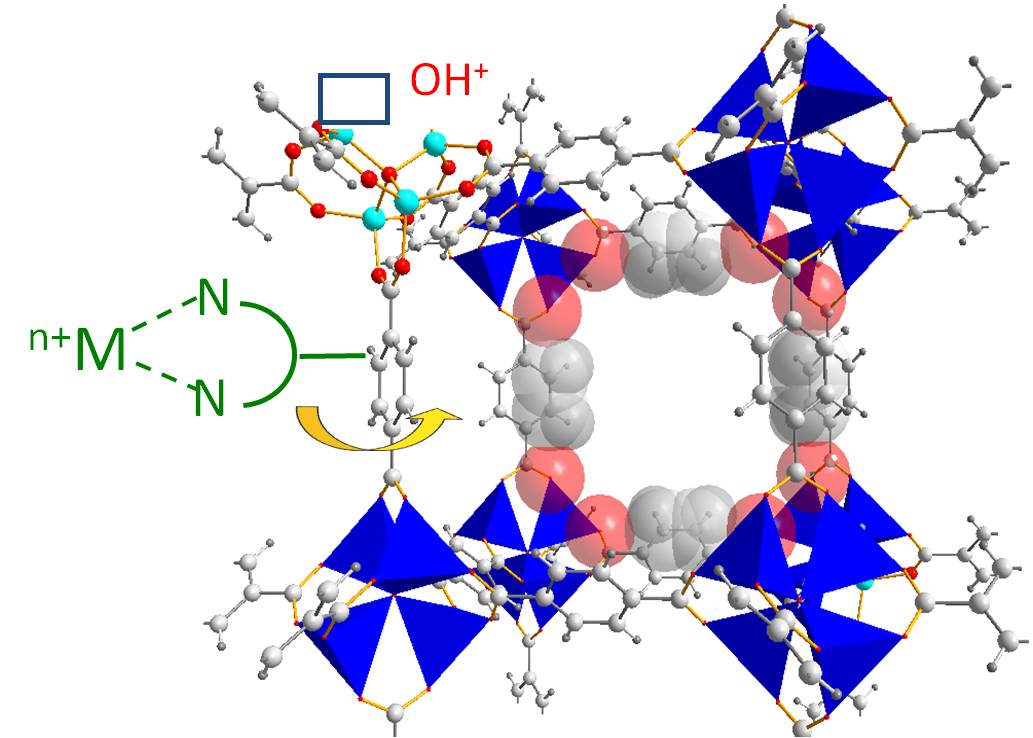
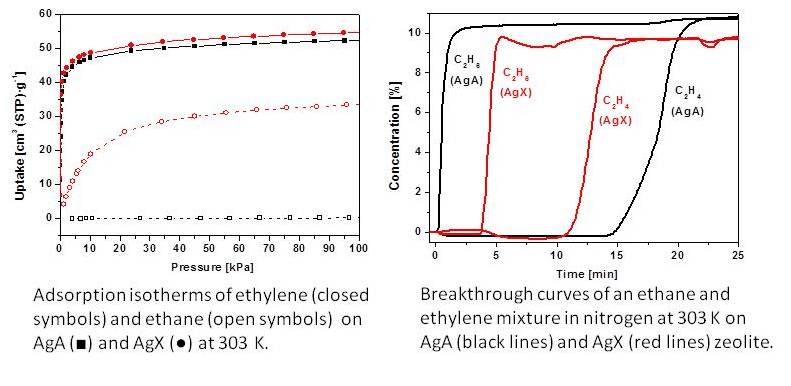
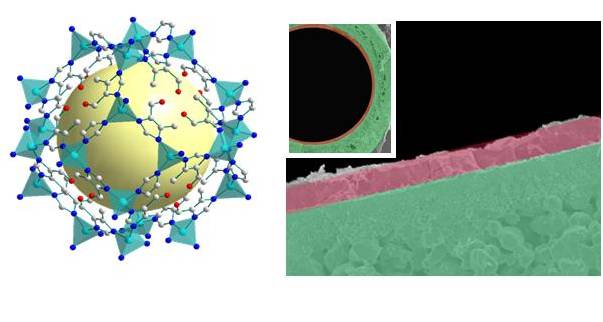
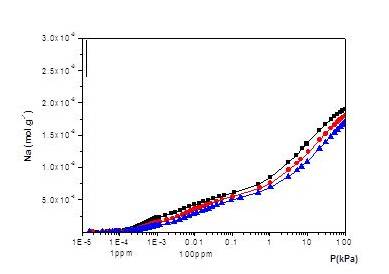
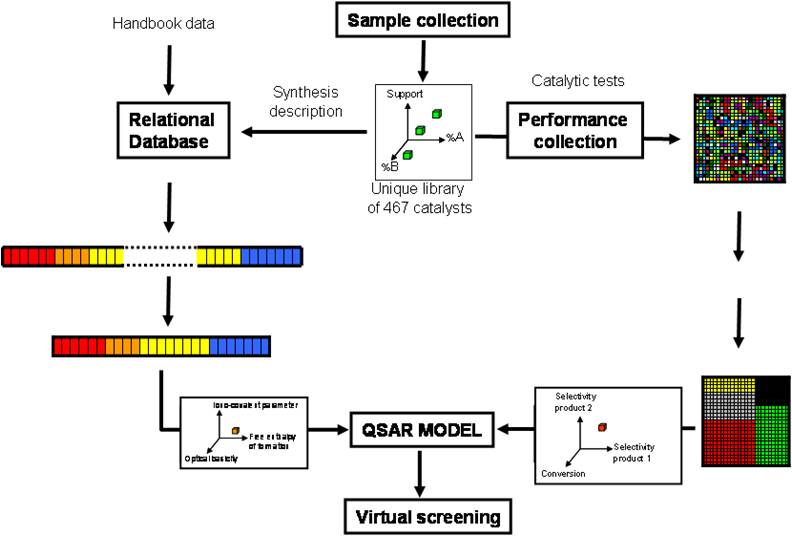
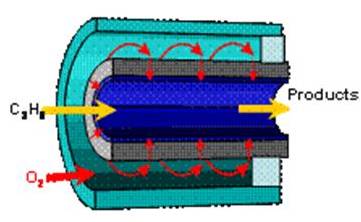
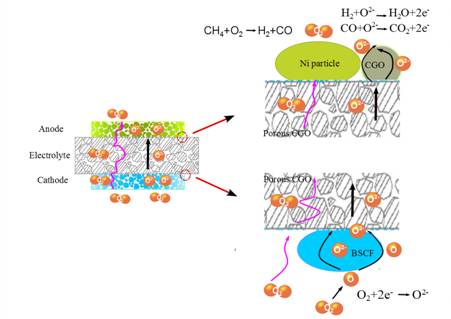
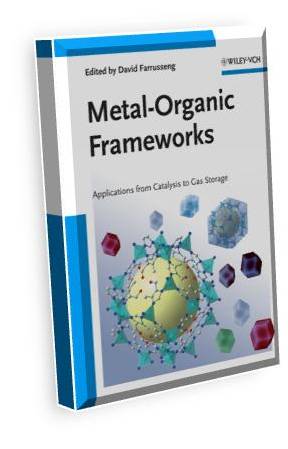 "Metal-Organic Frameworks - Applications from Catalysis to Gas Storage" (Wiley-VCH) ISBN-10: 3-527-32870-X
"Metal-Organic Frameworks - Applications from Catalysis to Gas Storage" (Wiley-VCH) ISBN-10: 3-527-32870-X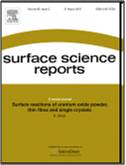 D. Farrusseng, "High Throughput Catalysis", Surf. Sci. Reports, 2008
D. Farrusseng, "High Throughput Catalysis", Surf. Sci. Reports, 2008